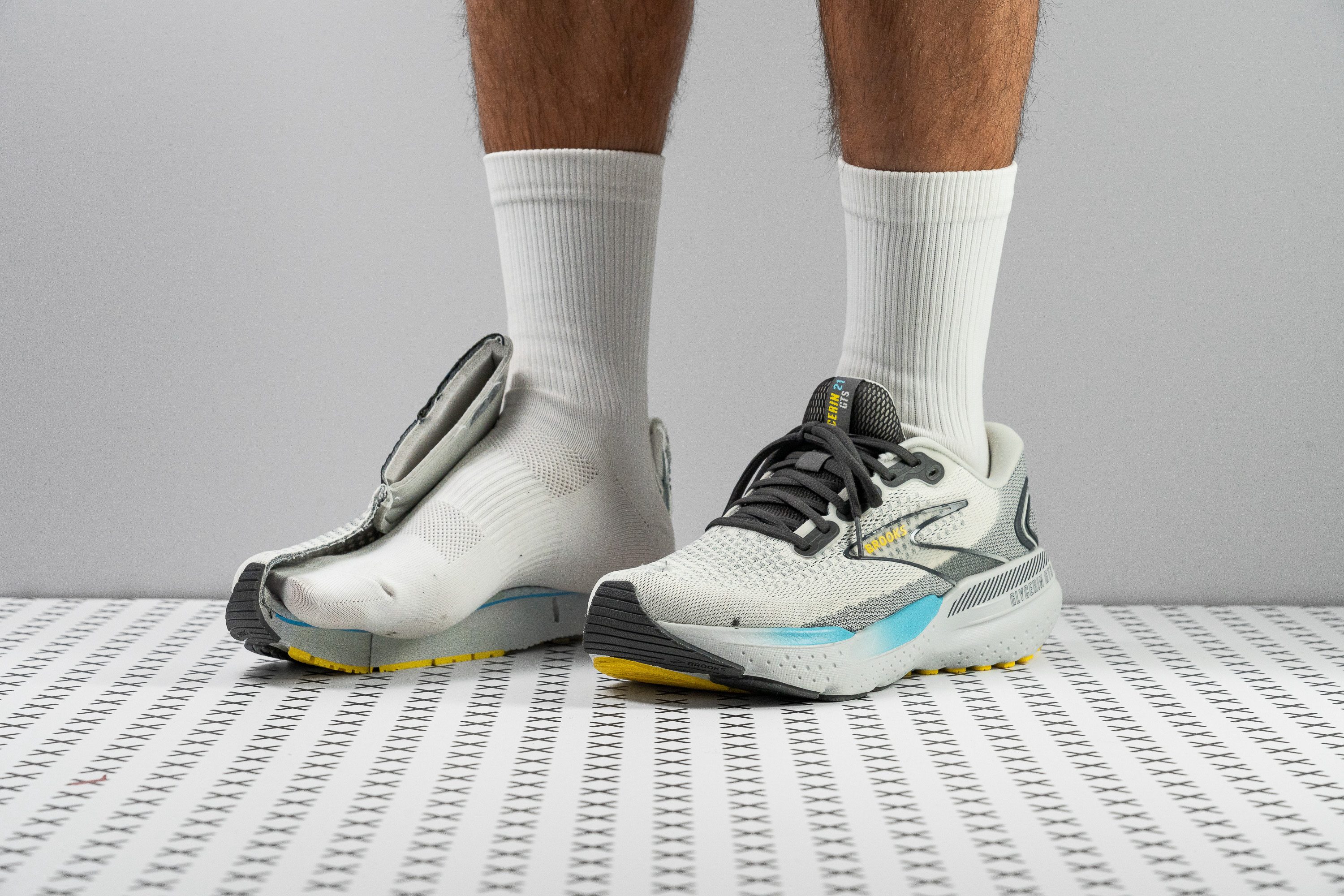Our verdict
Pros
- Reasonable weight gain over non-GTS version
- Super comfortable upper
- Fantastic non-intrusive stability
- Responsive supercritical foam
- Built-like-a-tank outsole
- Roomy toebox
- Ready for marathon training
Cons
- Knit upper lacks ventilation
- Not suitable for faster paces
- Could be lighter
Audience verdict
- Top 23% in shoes for gym and running
- Top 30% in vegan running shoes
- Top 28% most popular running shoes
Comparison
The most similar running shoes compared
+ + Add a shoe | |||||
|---|---|---|---|---|---|
| Audience score | 88 Great! | 85 Good! | 88 Great! | 79 Good! | |
| Price | £160 | £140 | £160 | £160 | |
| Pace | Daily running | Daily running | Daily running | Daily running | |
| Shock absorption | Low | Moderate | - | Moderate | |
| Energy return | Low | Moderate | - | Low | |
| Traction | Moderate | High | - | Moderate | |
| Arch support | Stability | Stability | Stability | Stability | |
| Weight lab Weight brand | 10.6 oz / 301g 10.7 oz / 303g | 10.4 oz / 295g 10.5 oz / 298g | 11.6 oz / 329g 11.8 oz / 334g | 10.8 oz / 305g 10.7 oz / 303g | |
| Drop lab Drop brand | 10.7 mm 10.0 mm | 9.3 mm 8.0 mm | 7.2 mm 8.0 mm | 10.1 mm 10.0 mm | |
| Strike pattern | Heel | HeelMid/forefoot | HeelMid/forefoot | Heel | |
| Size | True to size | Slightly small | Slightly small | True to size | |
| Midsole softness | Balanced | Soft | Balanced | Balanced | |
| Difference in midsole softness in cold | Normal | Big | Normal | Normal | |
| Toebox durability | Decent | Decent | Decent | Decent | |
| Heel padding durability | Good | Bad | Bad | Good | |
| Outsole durability | Good | Decent | Good | Good | |
| Breathability | Moderate | Moderate | Moderate | Breathable | |
| Width / fit | Medium | Medium | Medium | Medium | |
| Toebox width | Medium | Medium | Wide | Medium | |
| Stiffness | Moderate | Moderate | Stiff | Moderate | |
| Torsional rigidity | Stiff | Moderate | Stiff | Stiff | |
| Heel counter stiffness | Stiff | Stiff | Stiff | Moderate | |
| Heel lab Heel brand | 37.2 mm 38.0 mm | 36.8 mm 38.0 mm | 39.1 mm 41.0 mm | 37.8 mm 39.0 mm | |
| Forefoot lab Forefoot brand | 26.5 mm 28.0 mm | 27.5 mm 30.0 mm | 31.9 mm 33.0 mm | 27.7 mm 29.0 mm | |
| Widths available | NormalWide | NarrowNormalWideX-Wide | NormalWide | NormalWideX-Wide | |
| Orthotic friendly | ✓ | ✓ | ✓ | ✓ | |
| Season | All seasons | All seasons | All seasons | SummerAll seasons | |
| Removable insole | ✓ | ✓ | ✓ | ✓ | |
| Ranking | #234 Top 36% | #214 Bottom 42% | #134 Top 37% | #319 Bottom 14% | |
| Popularity | #182 Top 28% | #32 Top 9% | #280 Bottom 24% | #47 Top 13% |
Who should buy
We've discovered in the lab that the Brooks Glycerin GTS 21 is a superb choice for:
- Runners who desire a daily trainer that provides fantastic stability without the clunkiness or extra weight typically associated with such features.
- Neutral runners in need of enhanced support, particularly useful during the final miles of long runs.
- Mild-pronators or those with recurrent shin splints issues looking for a shoe with ample cushioning and extraordinary durability.

Who should NOT buy
Brooks has done a fantastic job with this shoe, but we've found in the lab that it has certain drawbacks, particularly its weight. For instance, shoes like the Hoka Arahi 7 and the Brooks Adrenaline GTS 23, which we also tested here in the lab, are be better options if you're not looking for a max-stack shoe.
Additionally, we do not recommend this model for most runners with a forefoot striking technique due to its high drop. We suggest the Saucony Tempus as an alternative with less heel-to-toe drop, which we think could better suit that running style.
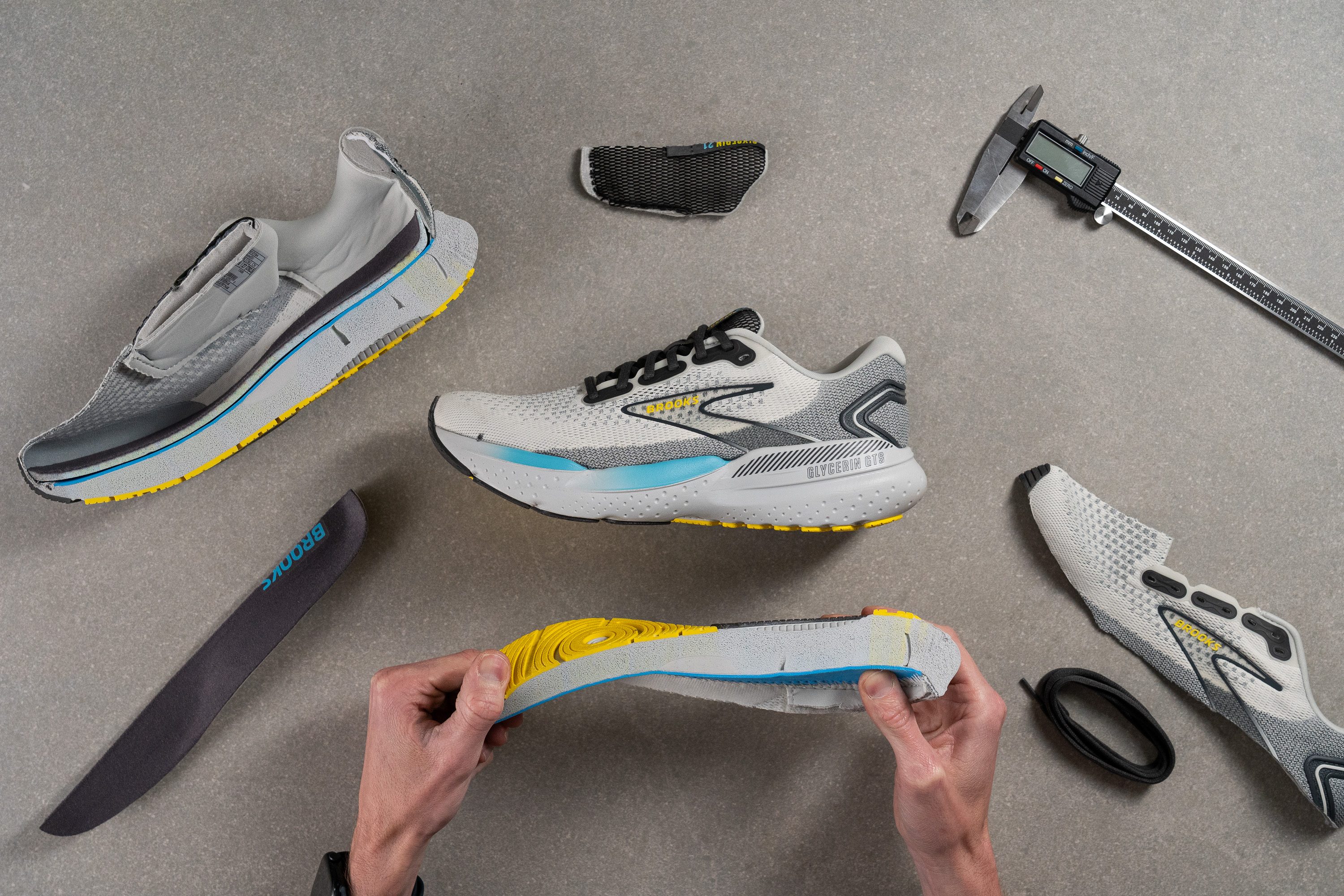
Cushioning
Shock absorption
The Glycerin GTS 21 includes a few stability-focused tweaks that create a different cushioning feel than its neutral counterpart. We found identical shock absorption scores: 105 SA in both the heel and forefoot. That's quite unusual but makes sense, as stability shoes often have a firmer rear section.
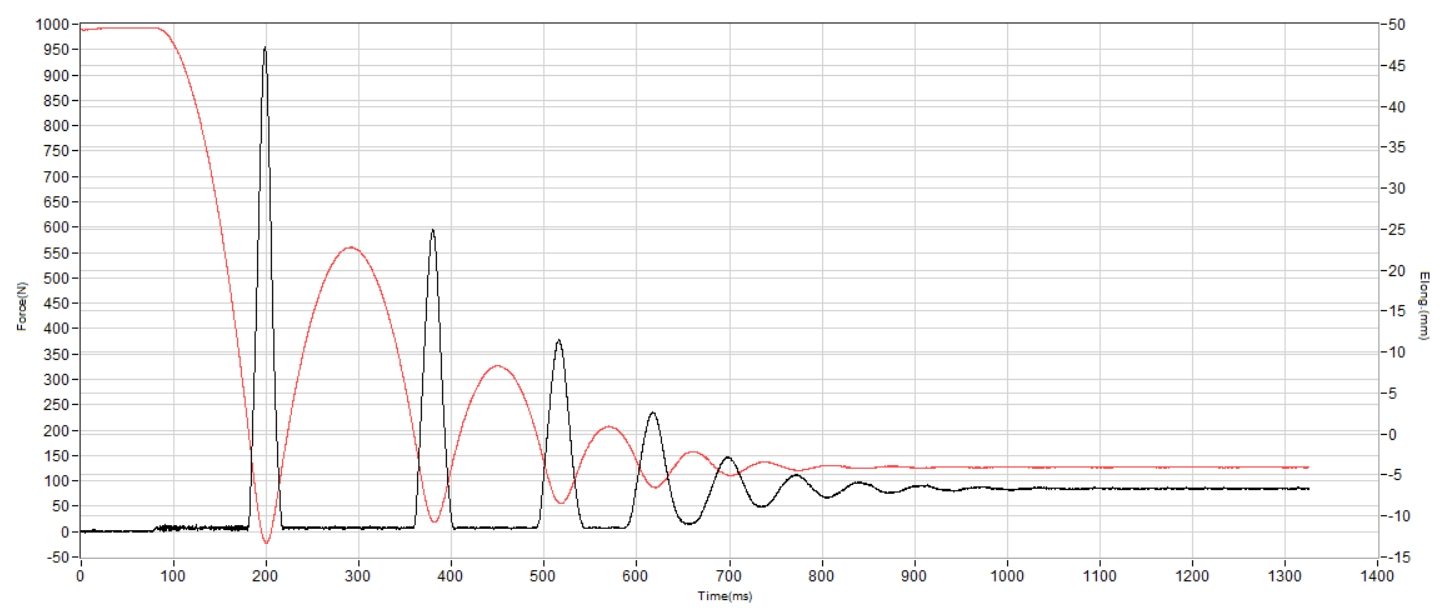
| Glycerin GTS 21 | 105 SA |
| Average | 129 SA |
Energy return
The addition of stability features also reduces energy return slightly, and that’s not great as the Glycerin series has always been limited in bounce. It now delivers just 50.9% in the heel and 53.2% in the forefoot, highlighting a clear need for improvement.
| Glycerin GTS 21 | 50.9% |
| Average | 58.5% |
Heel stack
In the heel, we measured 37.2mm following World Athletics guidelines, firmly positioning the Glycerin as a max-stack, mild-stability running shoe.
While this might initially spark concerns about getting proper support, we can confidently say it does a great job—it's impressively cushioned and remarkably stable.

| Glycerin GTS 21 | 37.2 mm |
| Average | 34.8 mm |
Forefoot stack
Our measurements showed the forefoot thickness at 26.5 mm.
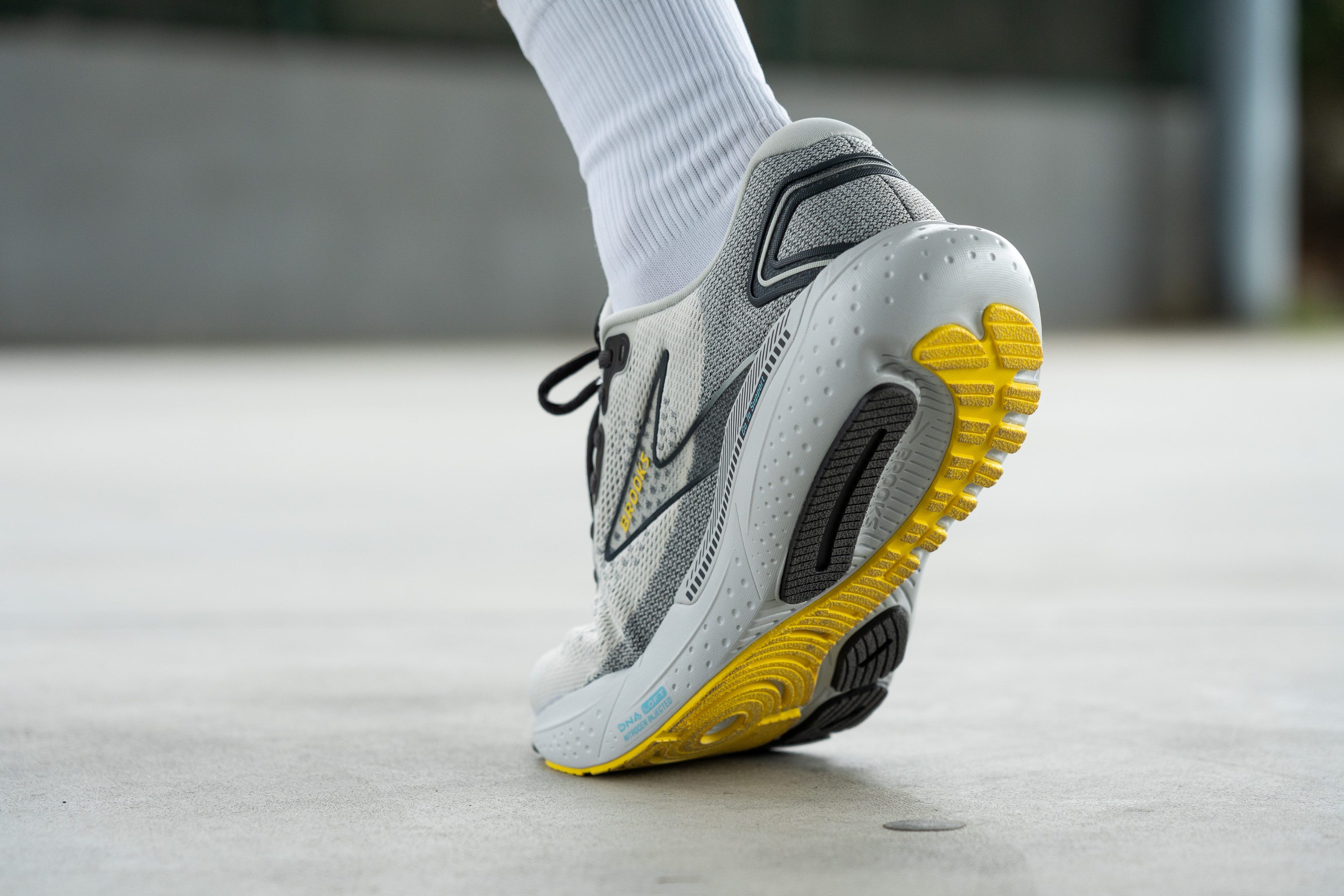
Although this dimension offers a closer feel to the ground compared to the thicker heel, it still delivers generous cushioning for forefoot and midfoot strikers.

| Glycerin GTS 21 | 26.5 mm |
| Average | 26.2 mm |
Drop
The gap between the two prior measurements results in an actual 10.7-mm drop, which nearly matches the official 10-mm drop claimed by Brooks.
By the way, if you're curious about why there are often discrepancies between our findings and the brands' claims, we offer a detailed guide that fully explores this topic.
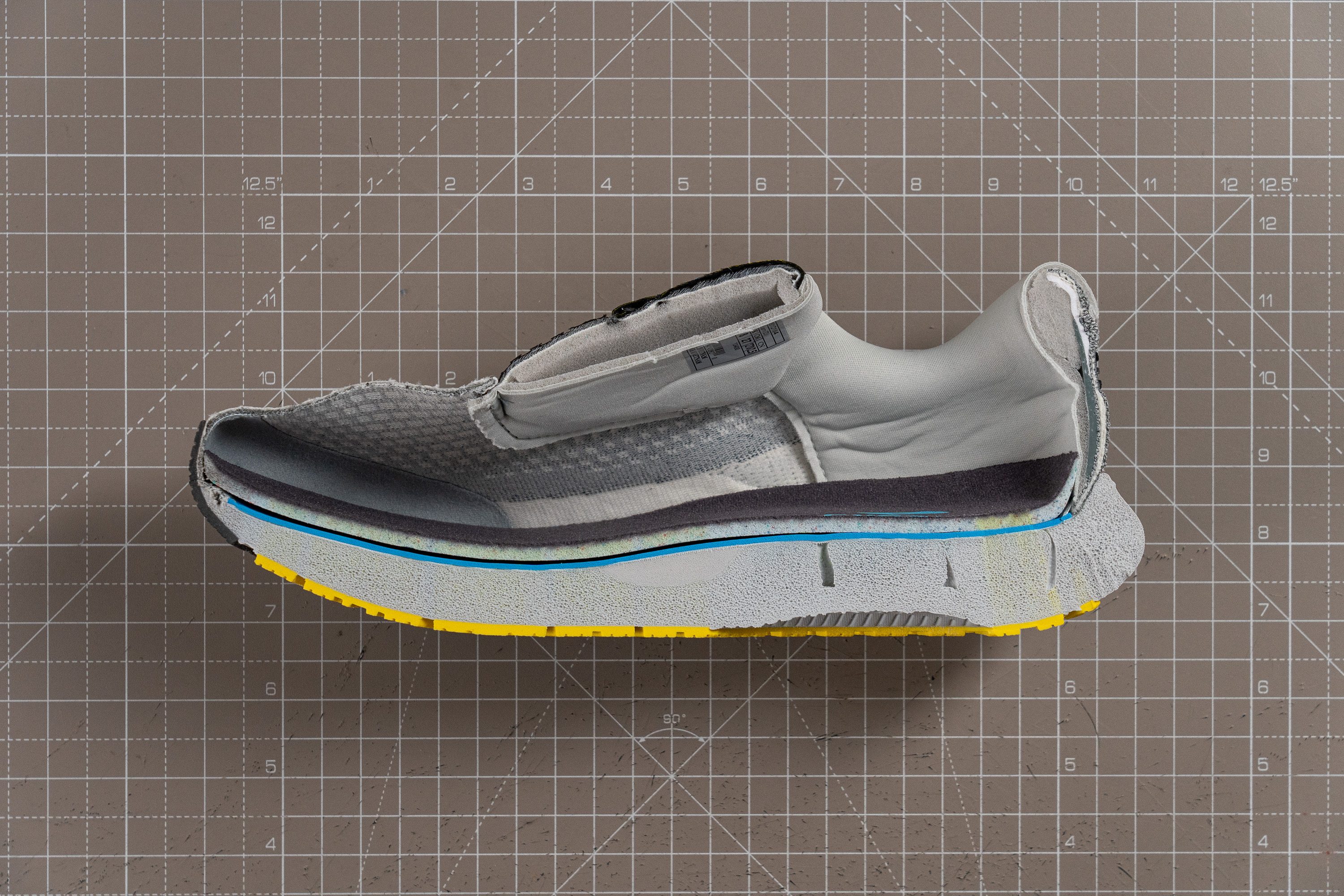
| Glycerin GTS 21 | 10.7 mm |
| Average | 8.6 mm |
Midsole softness
One aspect Brooks could have considered tweaking in this GTS version is the foam. However, we found that it remains unchanged, featuring the same foam that is used throughout the Glycerin series. From our perspective, opting for a slightly firmer compound could have enhanced stability even more for this model.
Consequently, we discovered that the GTS version continues to use the nitrogen-infused EVA known as DNA Loft v3 (20.9 HA). It's a reliable foam that offers sufficient energy return and pop for everyday running.
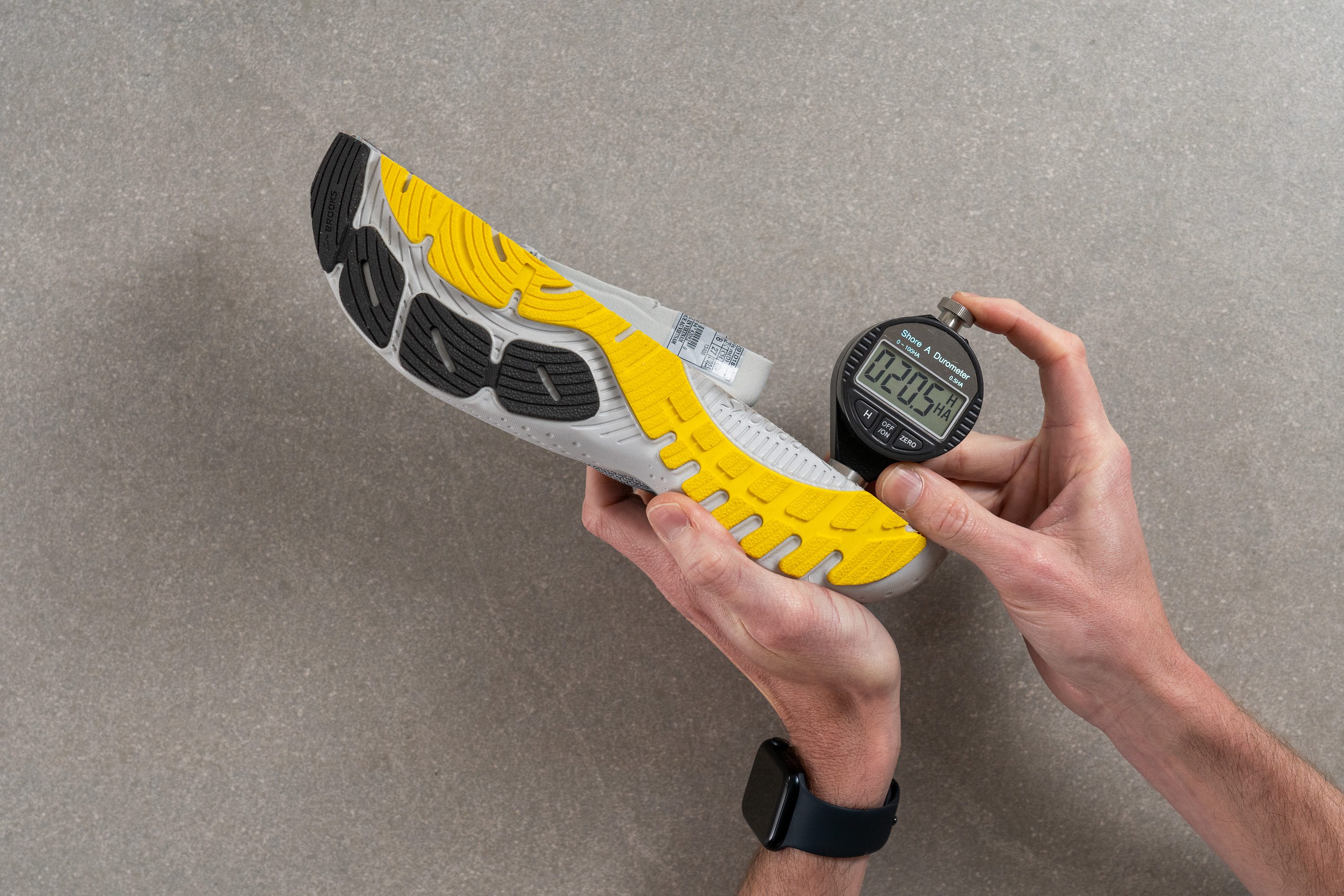
| Glycerin GTS 21 | 20.9 HA |
| Average | 20.4 HA |
Rocker
The Glycerin saga has consistently delivered a natural-ride, barely-rockered running experience, and we've observed that it continues this tradition. We consider this a triumph, as it preserves the shoe's core DNA.
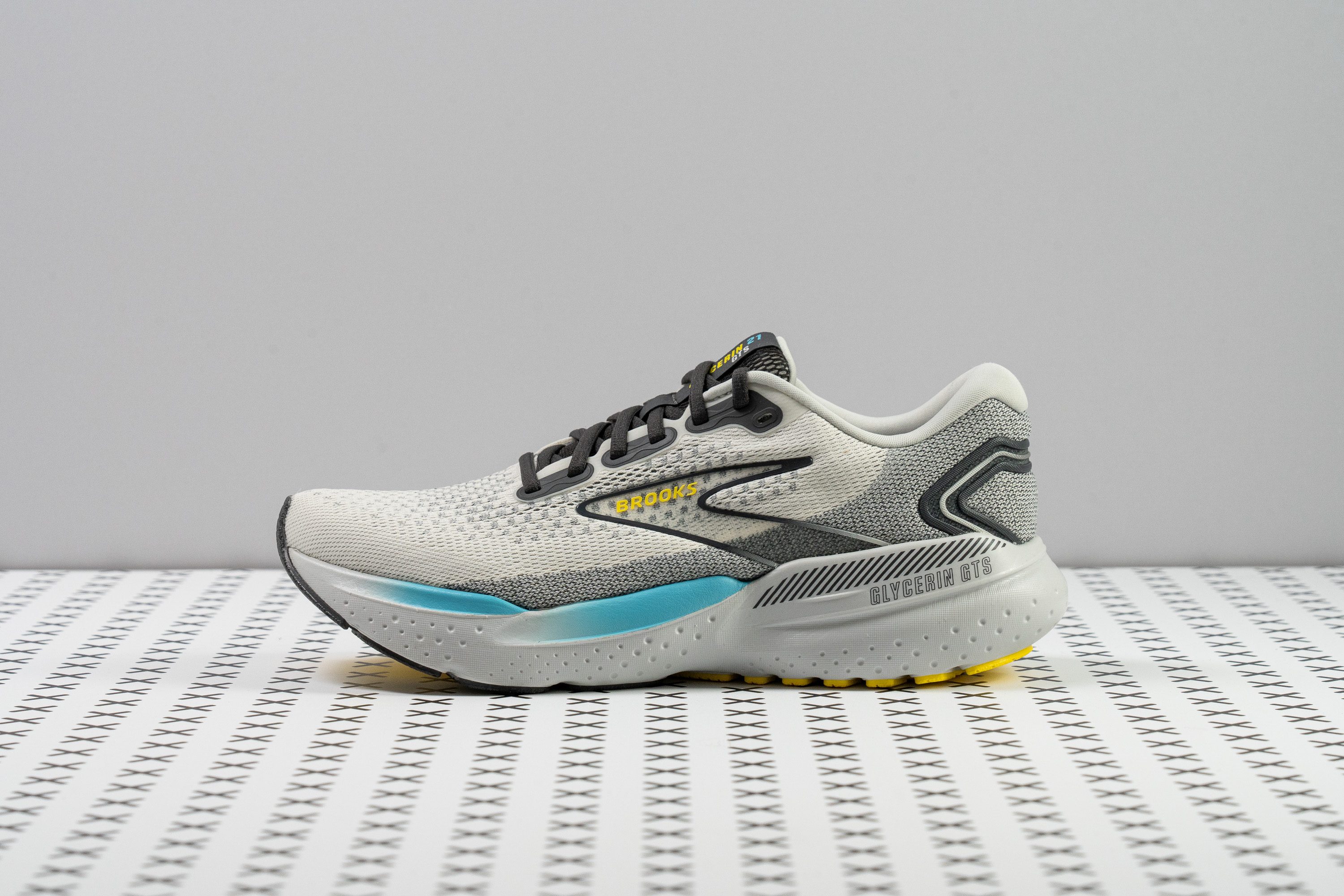
With the market overflowing with rockered shoes, offering a variety of options like this is essential for runners. And it's the right choice for a mild-stability shoe.
Size and fit
Size
Brooks Glycerin GTS 21 fits true to size (689 votes).
Width / Fit
After creating a gel mould of the Glycerin GTS 21's interiors, we discovered that it's on the spacious side at 97.3 mm, comfortably accommodating even slightly wider feet.
Additionally, Brooks offers the Glycerin GTS 21 in wide (2E) sizes in most countries, ensuring that those with broader feet can also enjoy the mild stability this version provides.

| Glycerin GTS 21 | 97.3 mm |
| Average | 95.1 mm |
Toebox width
Unlike the Ghost 16 and Ghost Max 2 from Brooks, this toebox doesn’t taper as much, providing a bit more room for the toes. Based on our test, this average measurement of 74.0 mm delivers a well-balanced fit.
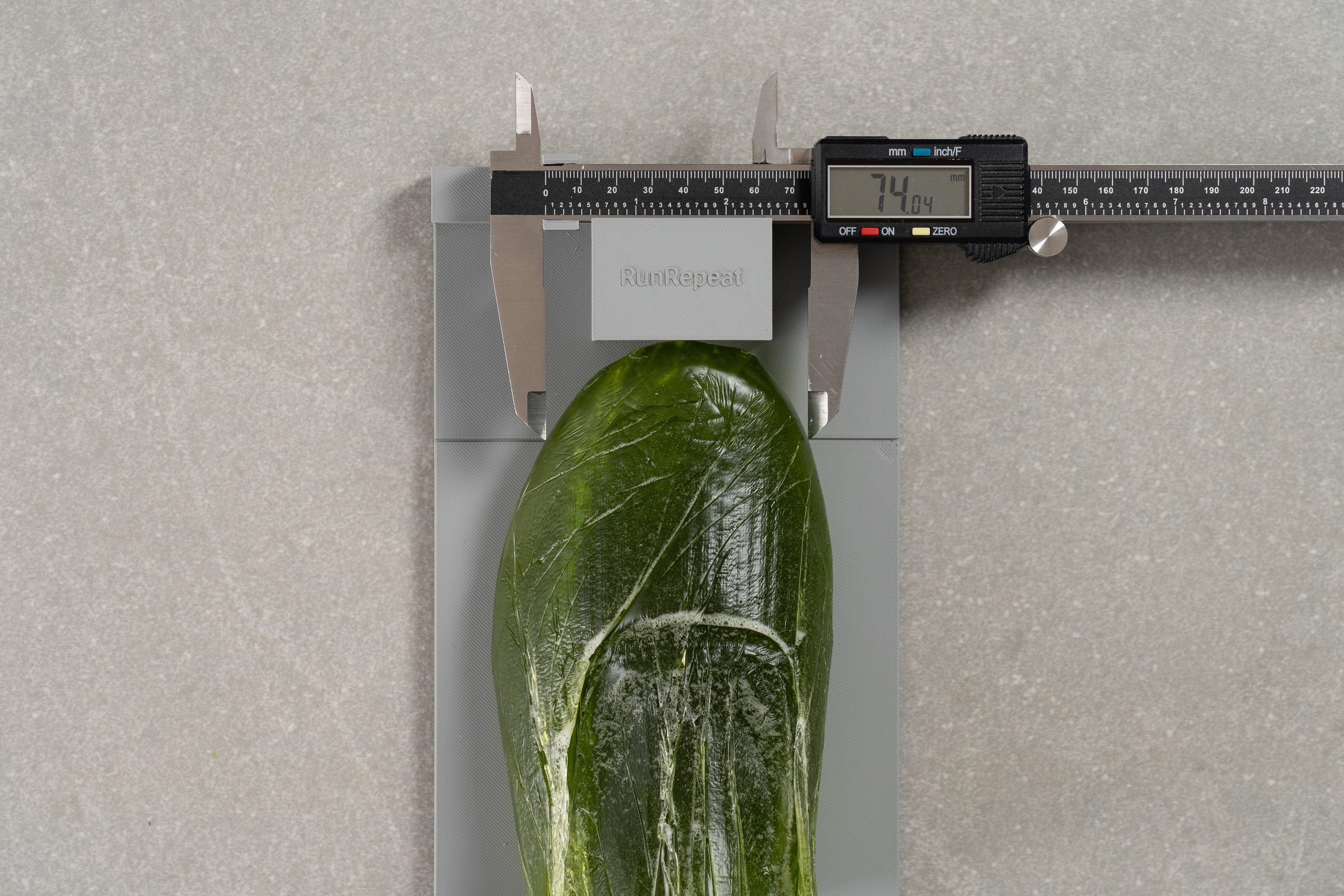
| Glycerin GTS 21 | 74.0 mm |
| Average | 73.3 mm |
Toebox height
We measured the height at 26.8 mm, which is adequate and should work well for most runners, though those who prefer a less form-fitting upper might opt for a shoe with greater vertical space.
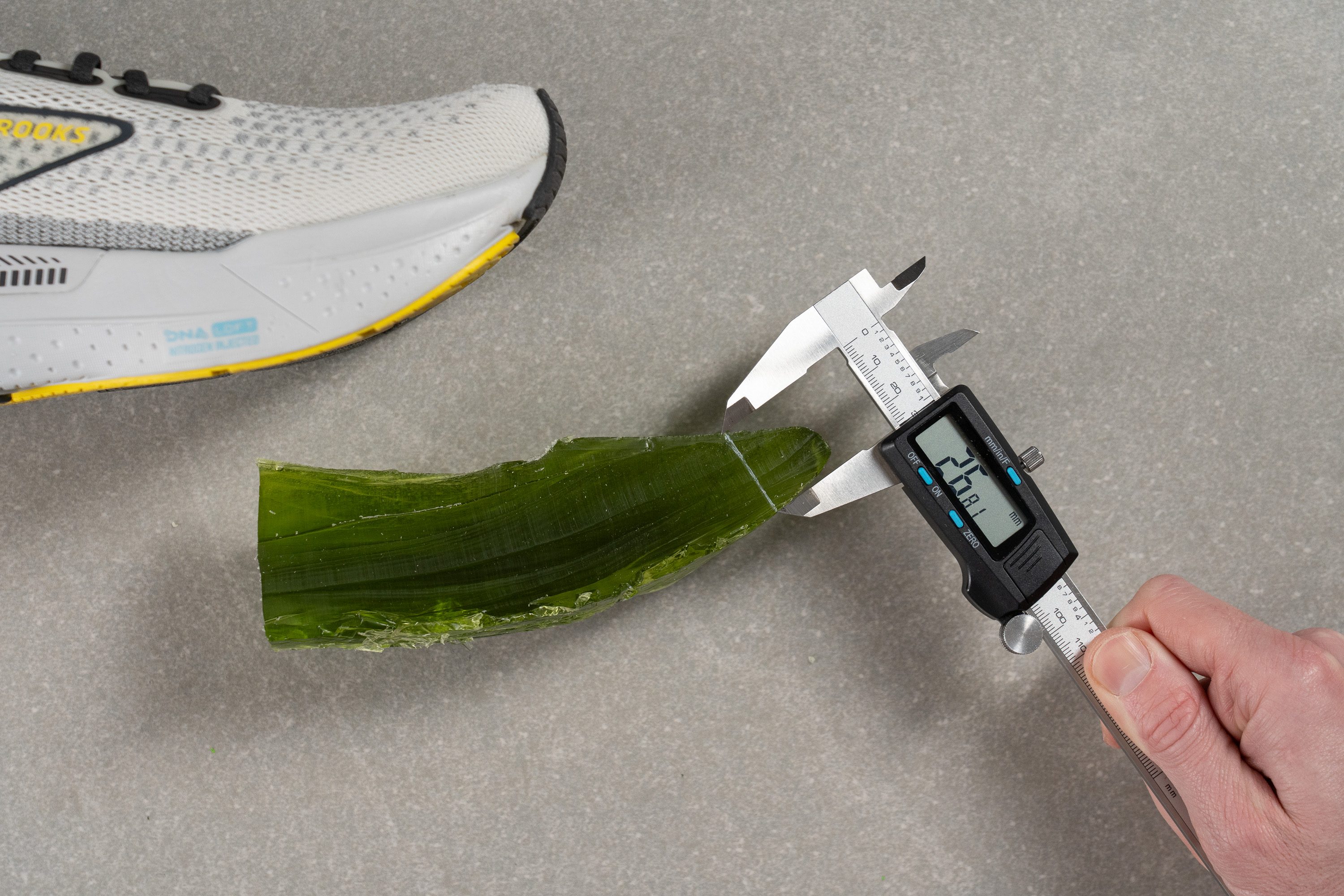
| Glycerin GTS 21 | 26.8 mm |
| Average | 27.1 mm |
Traction / Grip
Traction test
We tested the Brooks Glycerin GTS 21 in wet conditions and recorded a 0.36 score. It wasn’t the result we were hoping for, as we expected something slightly better from this stability-focused trainer.
On dry roads, traction feels fine for average mileage and day-to-day easy runs. But for runners frequently dealing with rain or slick surfaces, the GTS 21 leaves room for improvement.
| Glycerin GTS 21 | 0.36 |
| Average | 0.48 |
Outsole design
The GTS variant, designed specifically for mild-stability runners, includes additional RoadTack Rubber coverage in the midfoot to mitigate wear from overpronation.
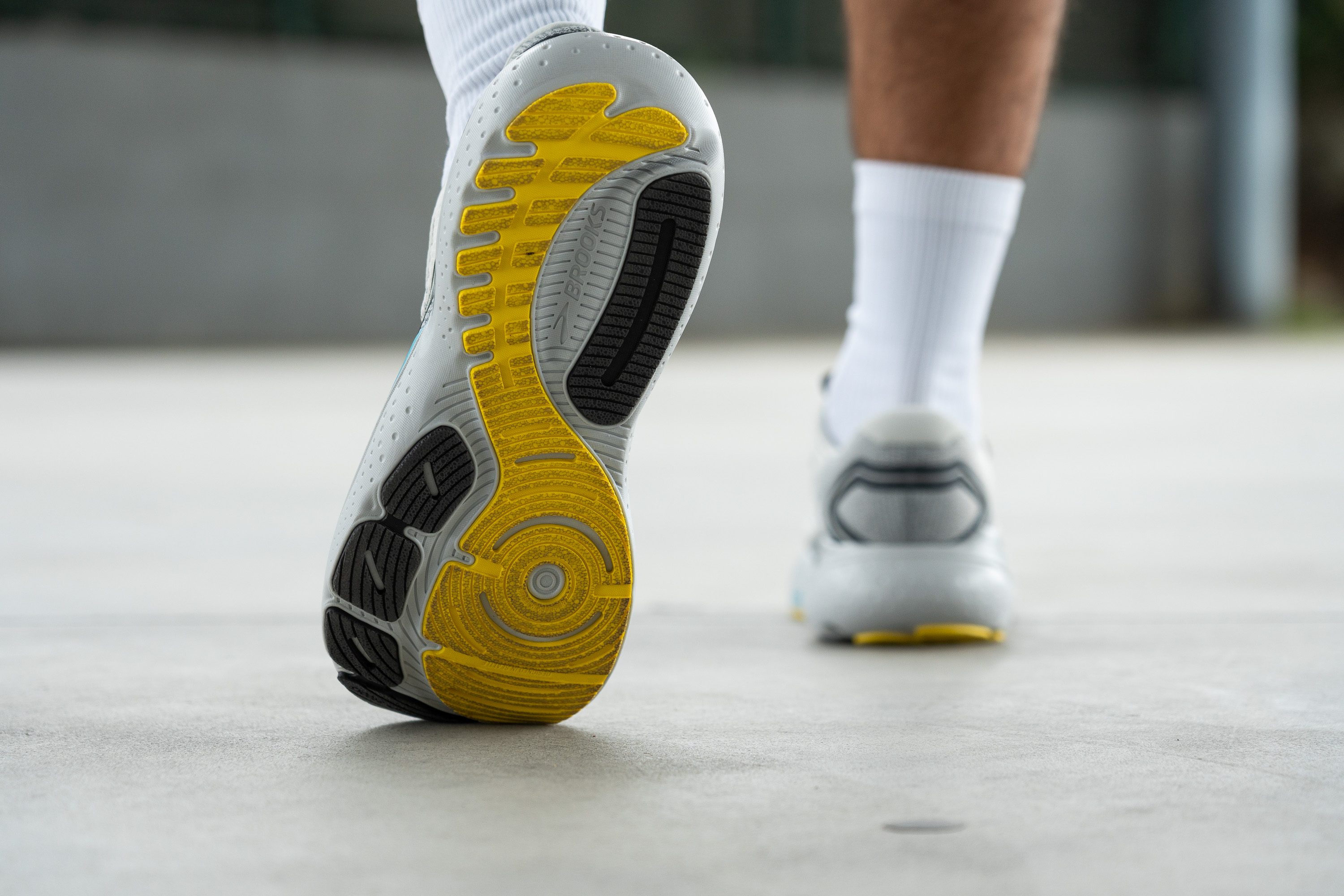
Flexibility / Stiffness
Our machine registered only 12.9N, a relatively low measurement that makes this shoe comfortable for easy paces or even casual walking with your dog.
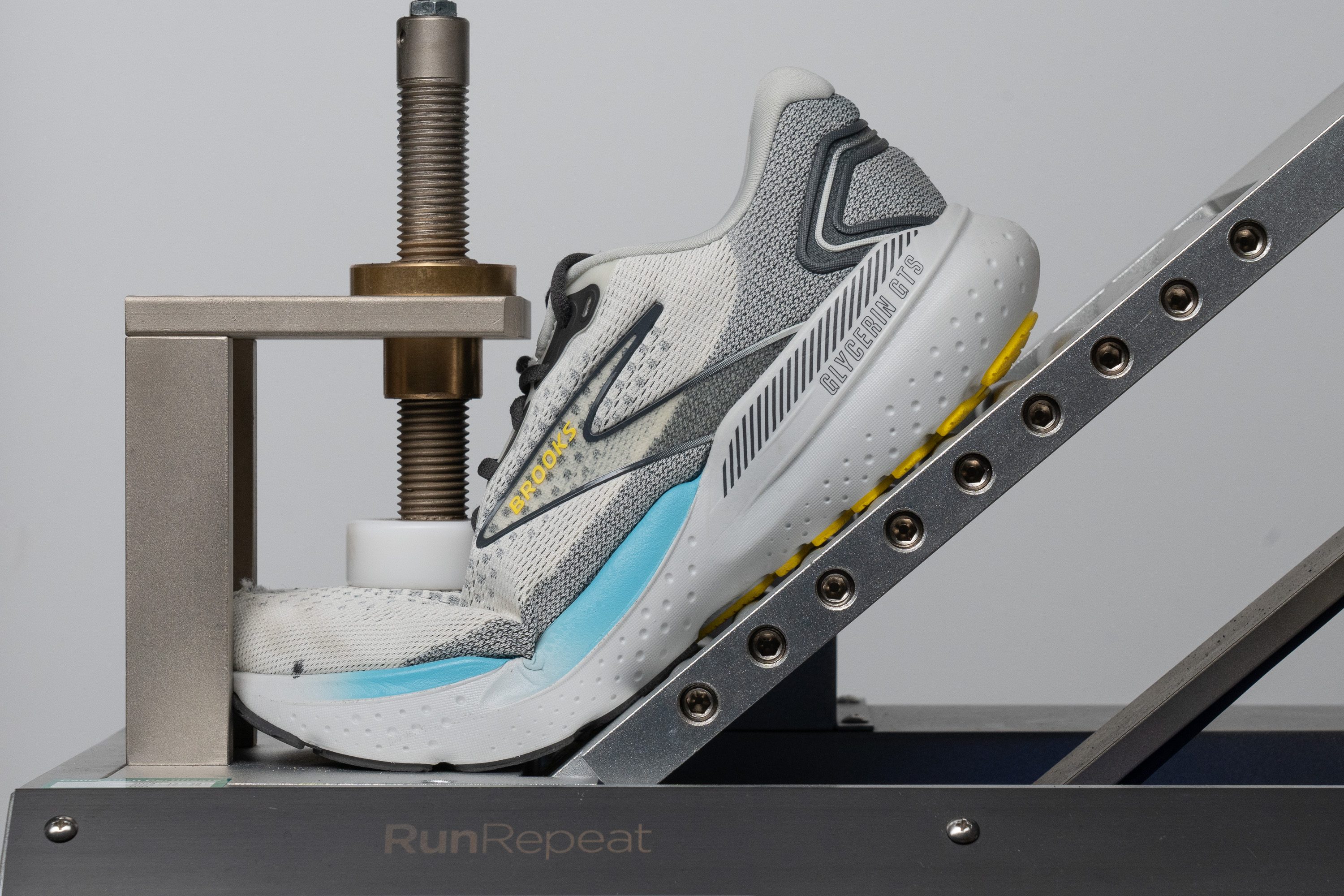
| Glycerin GTS 21 | 12.9N |
| Average | 15.3N |
Stiffness in cold (%)
After we left the Glycerin GTS 21 in the freezer for an additional 20 minutes and repeated our previous test, the results were very encouraging. We discovered that the shoe only became 15% stiffer—a surprisingly good performance. This is excellent for runners who face colder conditions.
| Glycerin GTS 21 | 15% |
| Average | 33% |
Weight
Despite weighing 10.6 oz (301g), we were quite pleased with the outcome, as it's only 0.8 ounces heavier than the standard version.
Given the additional rubber in the heel, the GuideRails system, and the reinforced heel counter, the slight increase in weight is quite reasonable!
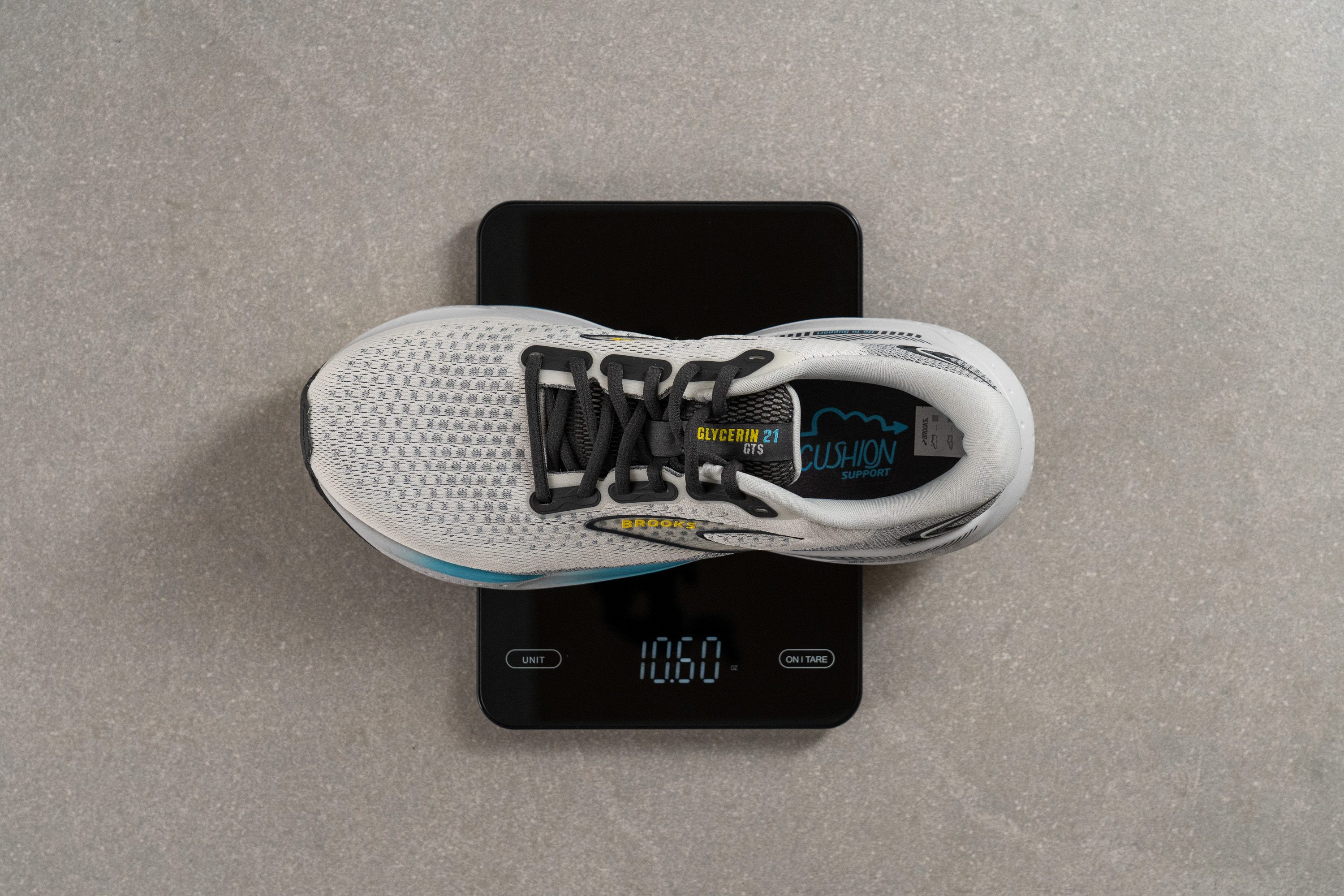
| Glycerin GTS 21 | 10.6 oz (301g) |
| Average | 9.3 oz (264g) |
Breathability
The Glycerin GTS 21 borrows the majority of its elements from the Glycerin 21, the go-to model for neutral runners. This includes the upper's warp knit material which, unfortunately, does not excel in breathability.
After our evaluations, we assigned it a modest 3 out of 5 rating. While not terrible, it definitely shows potential for improvement, particularly for those seeking a shoe for hot weather runs.
When we shone a powerful light through the sliced upper, the near absence of light passing through highlights the limited ventilation.

Delving deeper, we examined the knit upper under our microscope and noted a very dense material with barely any ventilation holes—just tiny spaces that don't allow much air to flow through.
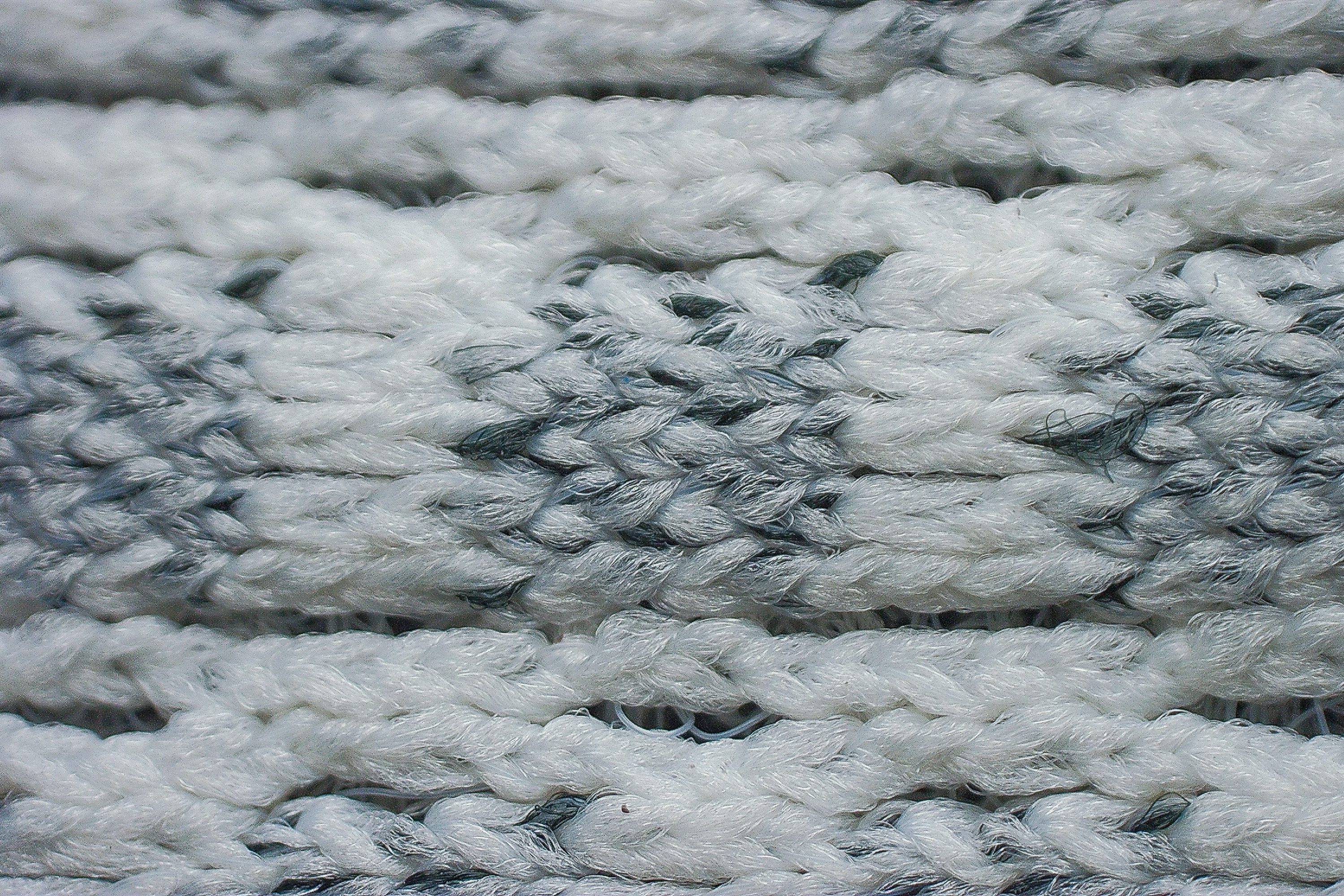
Despite these shortcomings, the thick upper does contribute positively to comfort, a quality we confirmed through hands-on testing.
Similarly, we were pleased to find substantial padding in both the tongue and heel, consistent with the neutral version of this model.
| Glycerin GTS 21 | 3 |
| Average | 3.7 |
Stability
Lateral stability test
The "GTS" in the shoe's name stands for "Go To Support," and indeed, support is where this shoe truly excels.
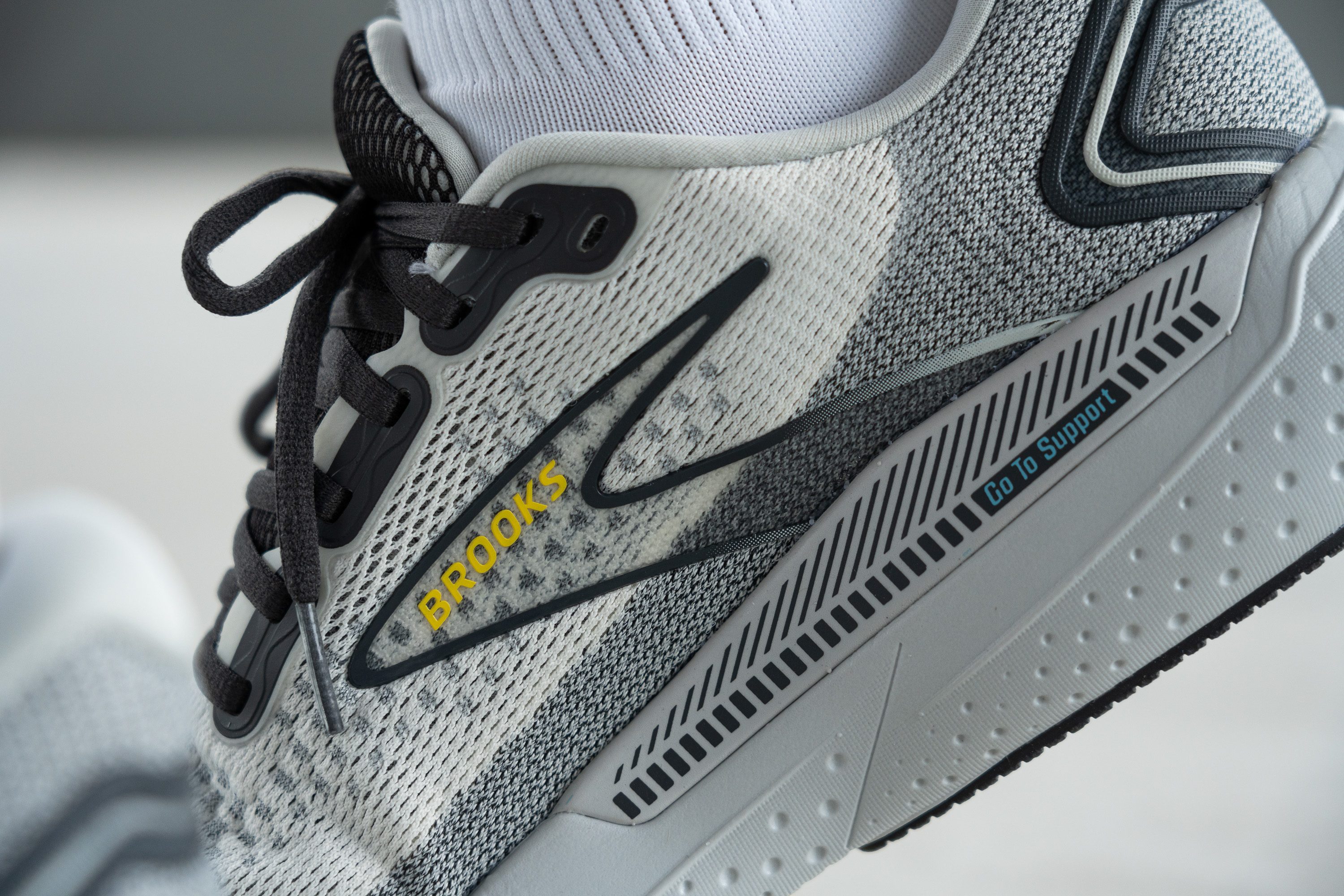
It's important to note that Brooks doesn't market this as a stability shoe for severe overpronators, but rather as a hybrid—somewhere between a robust stability shoe and a daily trainer.
It's exceptionally effective for runners with moderate stability needs, subtly enhancing gait correction and promoting a smoother stride without being obtrusive.
Torsional rigidity
One standout feature when comparing the GTS with the regular edition is its enhanced torsional rigidity, crucial for its mild-stability role.
We scored this feature a robust 4 out of 5, which is significantly higher compared to the standard model's 2 out of 5. This difference highlights the GTS version's focus on providing more support over a flexible ride.
| Glycerin GTS 21 | 4 |
| Average | 3.5 |
Heel counter stiffness
The heel counter earned a perfect score of 5 out of 5 in our manual evaluation—a result that should hardly be surprising for a stability shoe.
Brooks has enhanced the GTS by incorporating an additional TPU piece on the outer heel, boosting rigidity and providing crucial stability for rearfoot strikers.
| Glycerin GTS 21 | 5 |
| Average | 2.9 |
Midsole width - forefoot
Although the GTS version introduces some changes in rigidity and the outsole, the midsole dimensions are consistent with the neutral version.
We measured 117.3 mm in the widest part of the forefoot, providing stable support that benefits forefoot and midfoot strikers, especially during sharp turns.
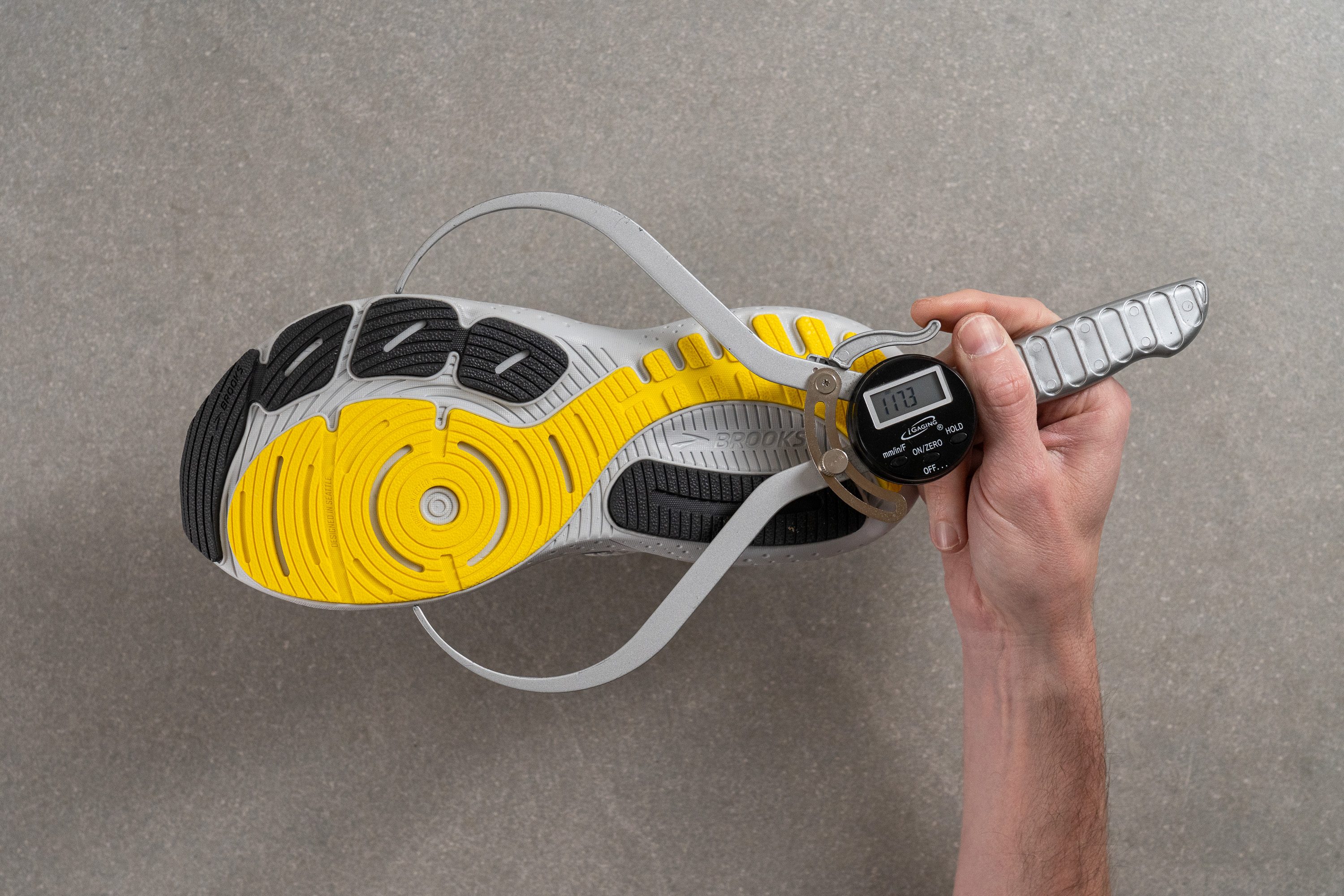
| Glycerin GTS 21 | 117.3 mm |
| Average | 114.4 mm |
Midsole width - heel
The heel reveals a similar story—we encountered the same large silhouette found in the neutral daily trainer, measuring a significant 100.2 mm.
This dimension fits well within the expectations for a mild-stability running shoe, although it's notably large for a neutral trainer. It appears to us that Brooks opted to standardise the sole across both models, but using the GTS version as a foundational blueprint.
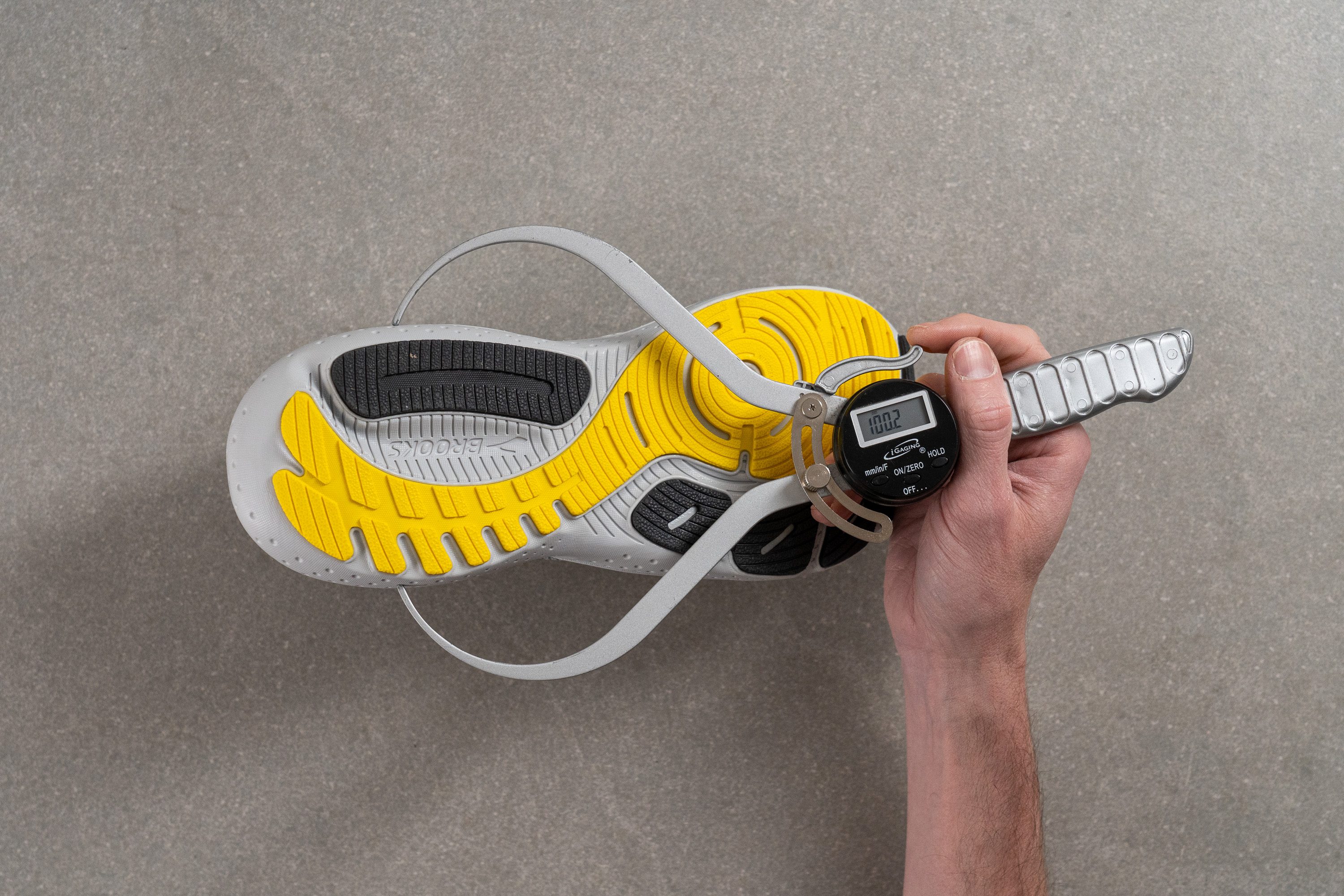
| Glycerin GTS 21 | 100.2 mm |
| Average | 90.7 mm |
Durability
Toebox durability
Our initial test using the Dremel on the GTS 21 focused on assessing the toebox's durability. We awarded it a modest score of 3 out of 5, which is a positive result, especially for a knit upper.
We're quite satisfied with this, considering the Glycerin's luxuriously plush upper. This performance confirms our belief that the shoe offers decent resilience, especially given the softness of its materials.
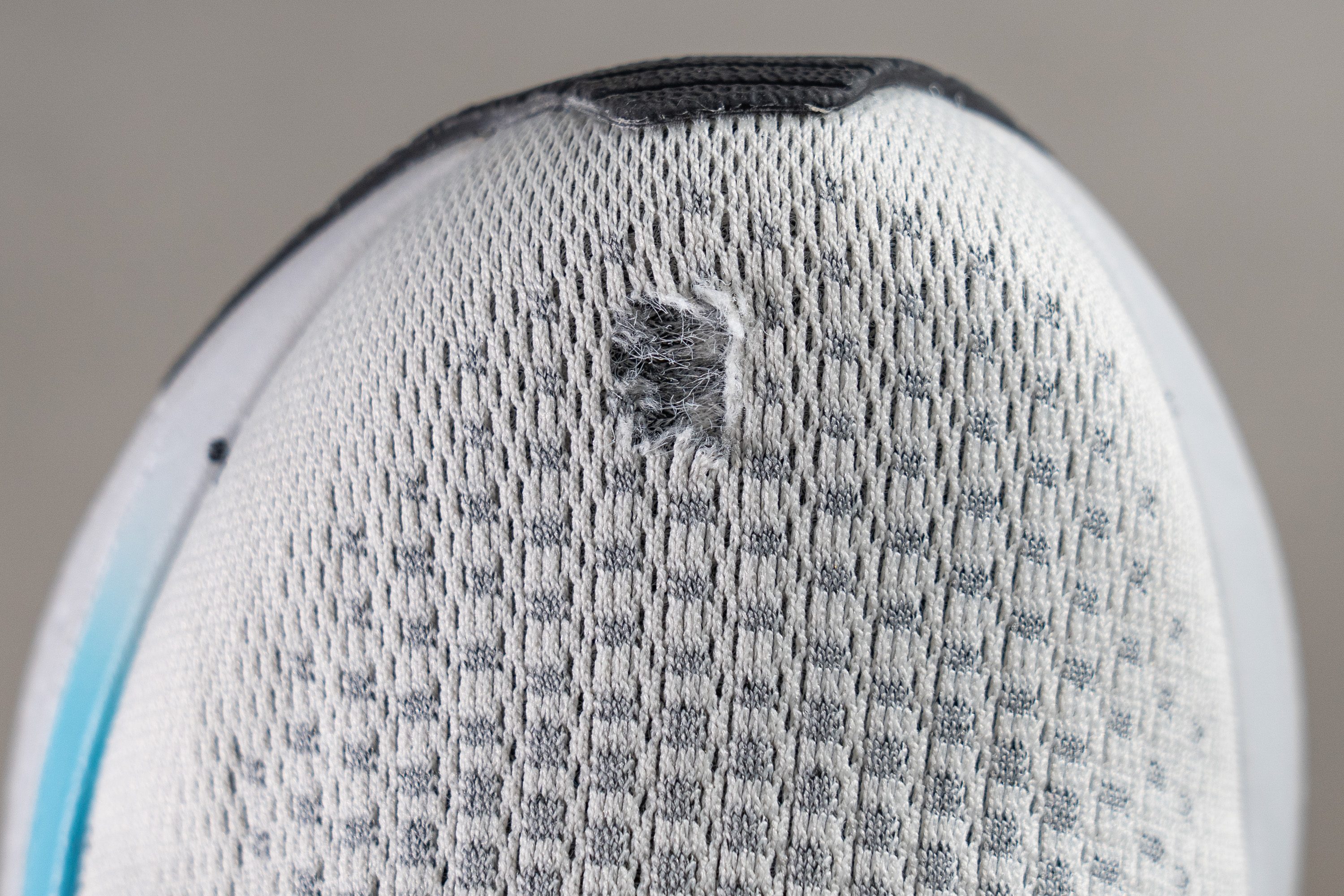
| Glycerin GTS 21 | 3 |
| Average | 2.6 |
Heel padding durability
After completing the evaluation of the toebox, we shifted our focus to the heel padding to see if the results would be as promising.
We were quite pleased with what we discovered—a score of 4 out of 5. This excellent rating reflects outstanding durability in the heel, underscoring the GTS robust Achilles area.
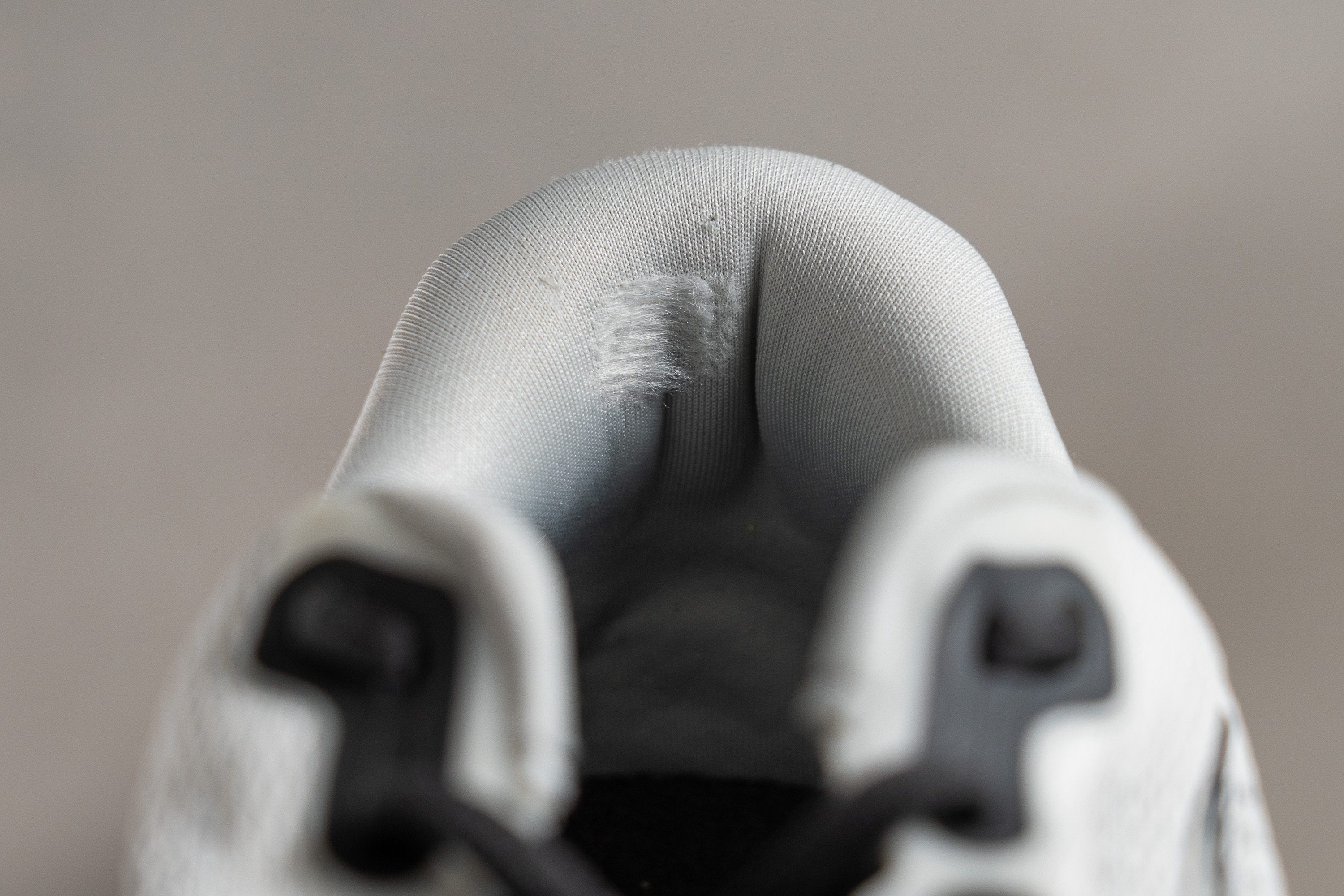
| Glycerin GTS 21 | 4 |
| Average | 3.4 |
Outsole hardness
We turned the shoe over to examine the outsole closely, starting with the hardness of the Roadtack Rubber. The GTS variant, designed specifically for mild-stability runners, includes additional coverage in the midfoot to mitigate wear from overpronation.

Our tests showed the Roadtack Rubber has a hardness of 87.0 HC, emphasising that this outsole is primarily built for lasting durability over everything else.
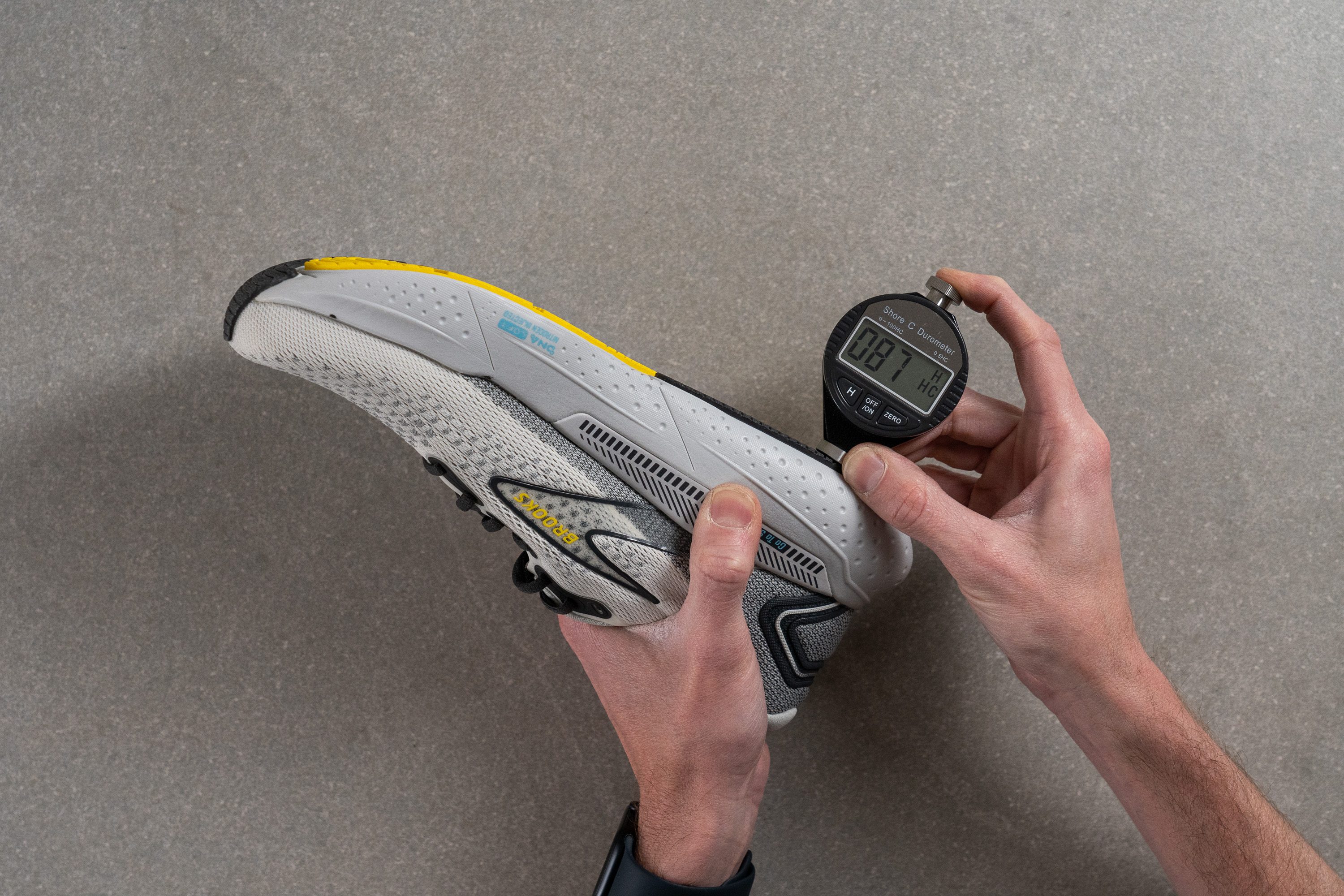
| Glycerin GTS 21 | 87.0 HC |
| Average | 79.2 HC |
Outsole durability
In our final Dremel test, we doubled the speed to 10K RPM to challenge the Roadtack Rubber outsole of the Glycerin GTS 21 more aggressively.
Remarkably, the rubber of the Glycerin GTS 21 has proven itself to be exceptionally resilient. Despite the intensified testing, we noted only a slight indentation of 0.5 mm. That's an A++ in our books.
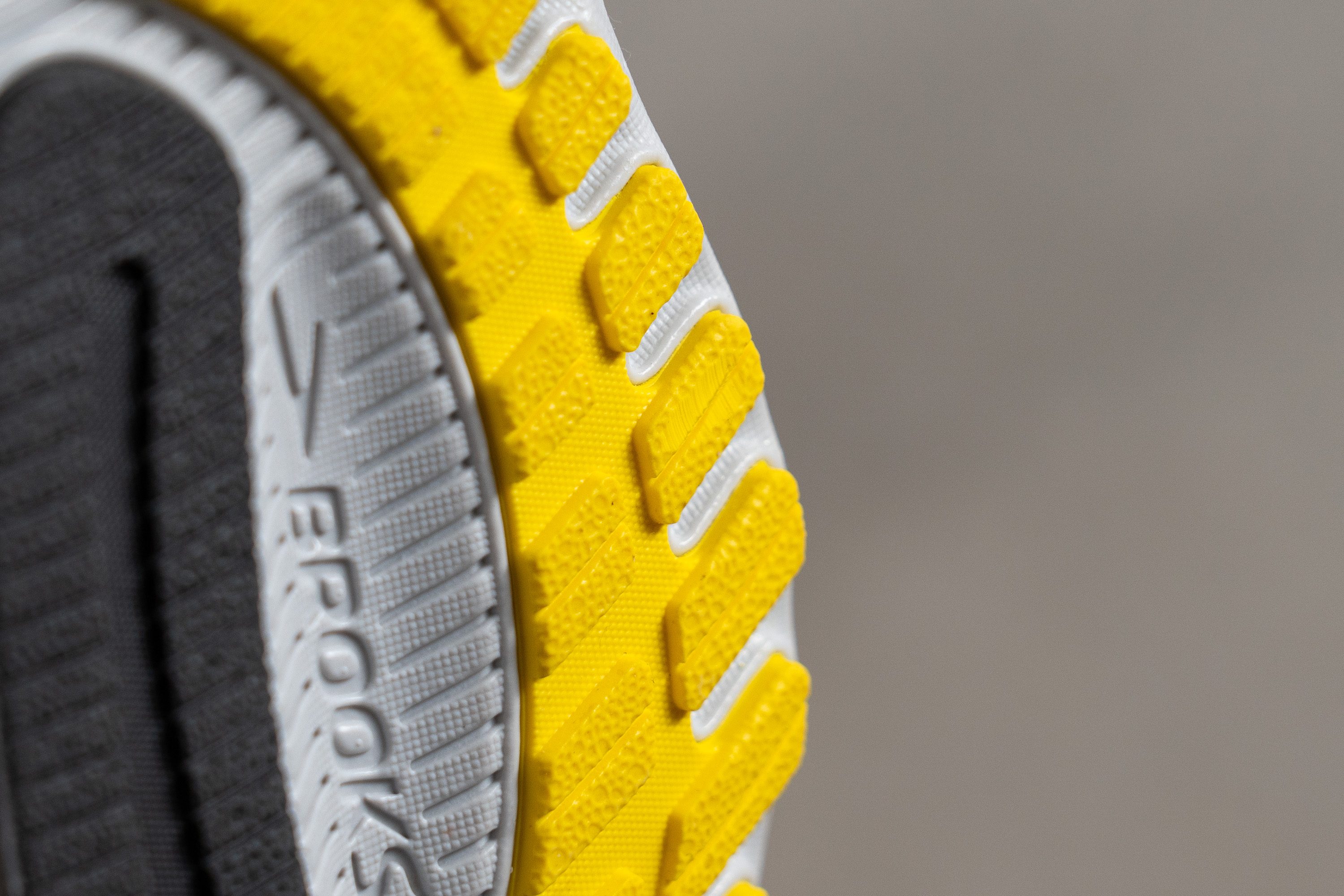
| Glycerin GTS 21 | 0.5 mm |
| Average | 1.1 mm |
Outsole thickness
We measured the rubber at a substantial thickness of 3.2 mm, which seems a lot, especially considering the minor 0.5 mm indentation we observed just before.
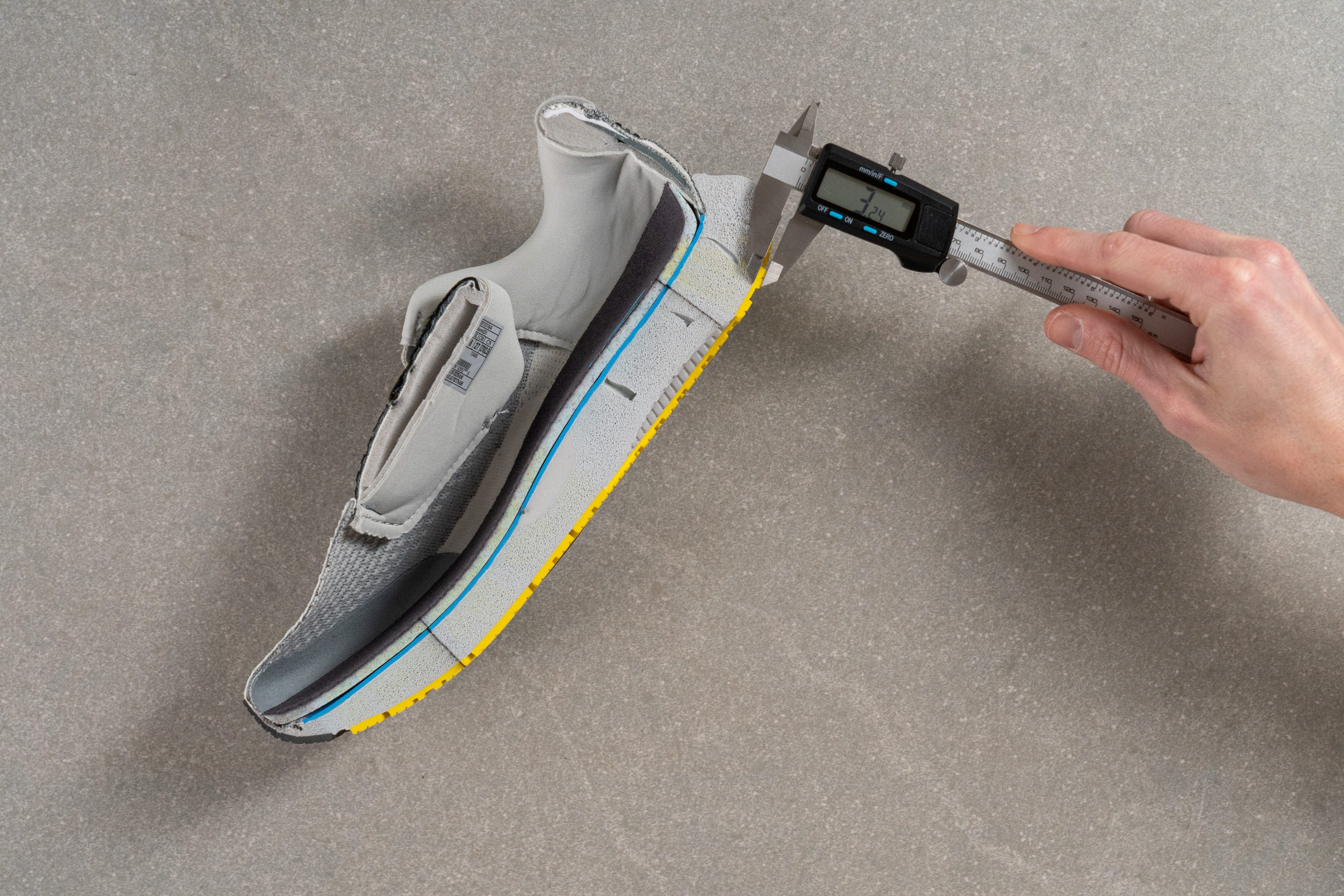
| Glycerin GTS 21 | 3.2 mm |
| Average | 3.2 mm |
Misc
Insole thickness
We found a fairly typical EVA insole with a thickness of 4.8 mm. It's delivers essential cushioning without distinguishing itself by being ultra slim or thick.
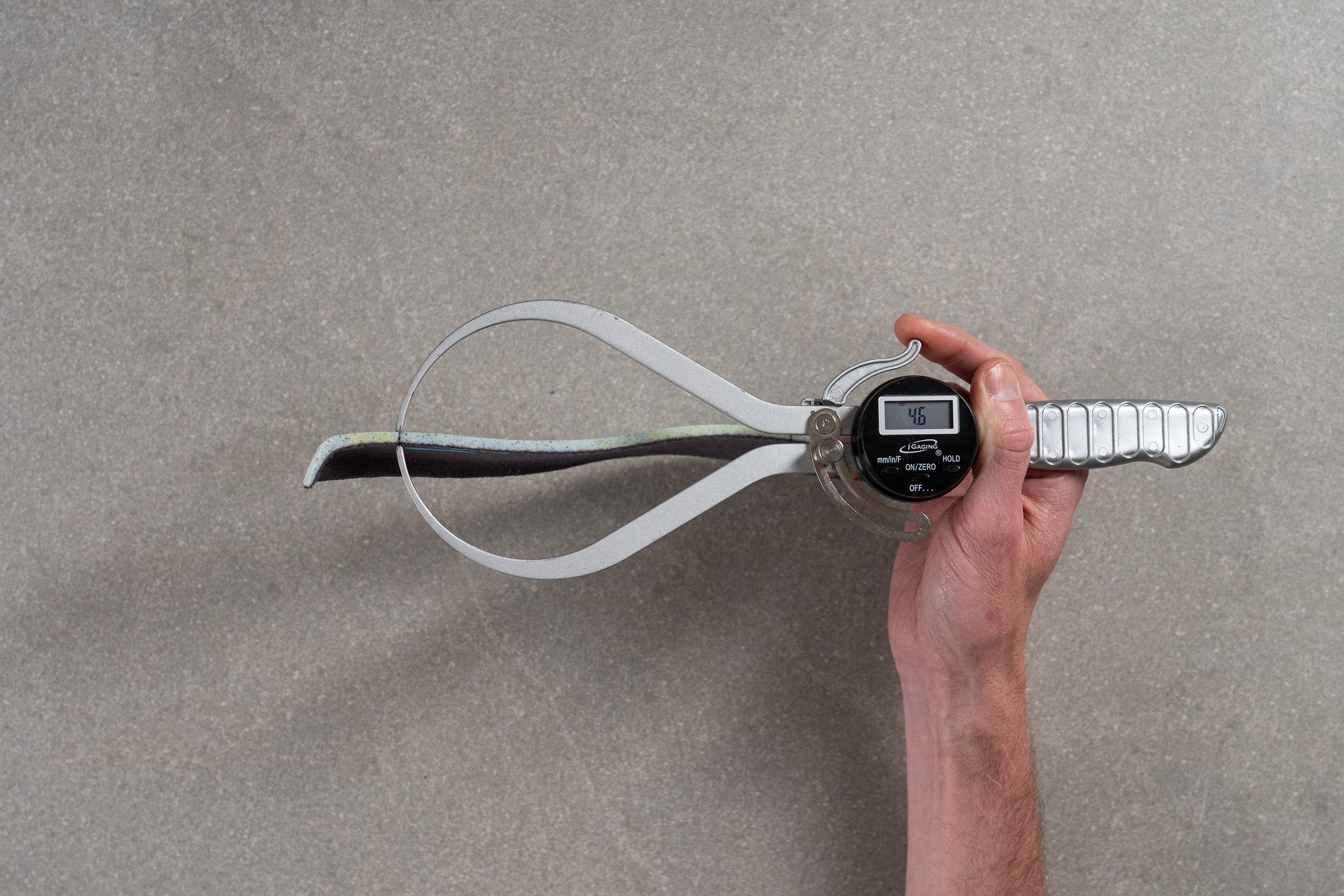
| Glycerin GTS 21 | 4.6 mm |
| Average | 4.5 mm |
Removable insole
We found that the insole is not fixed to the last, which makes it simple to exchange it with a third-party footbed.
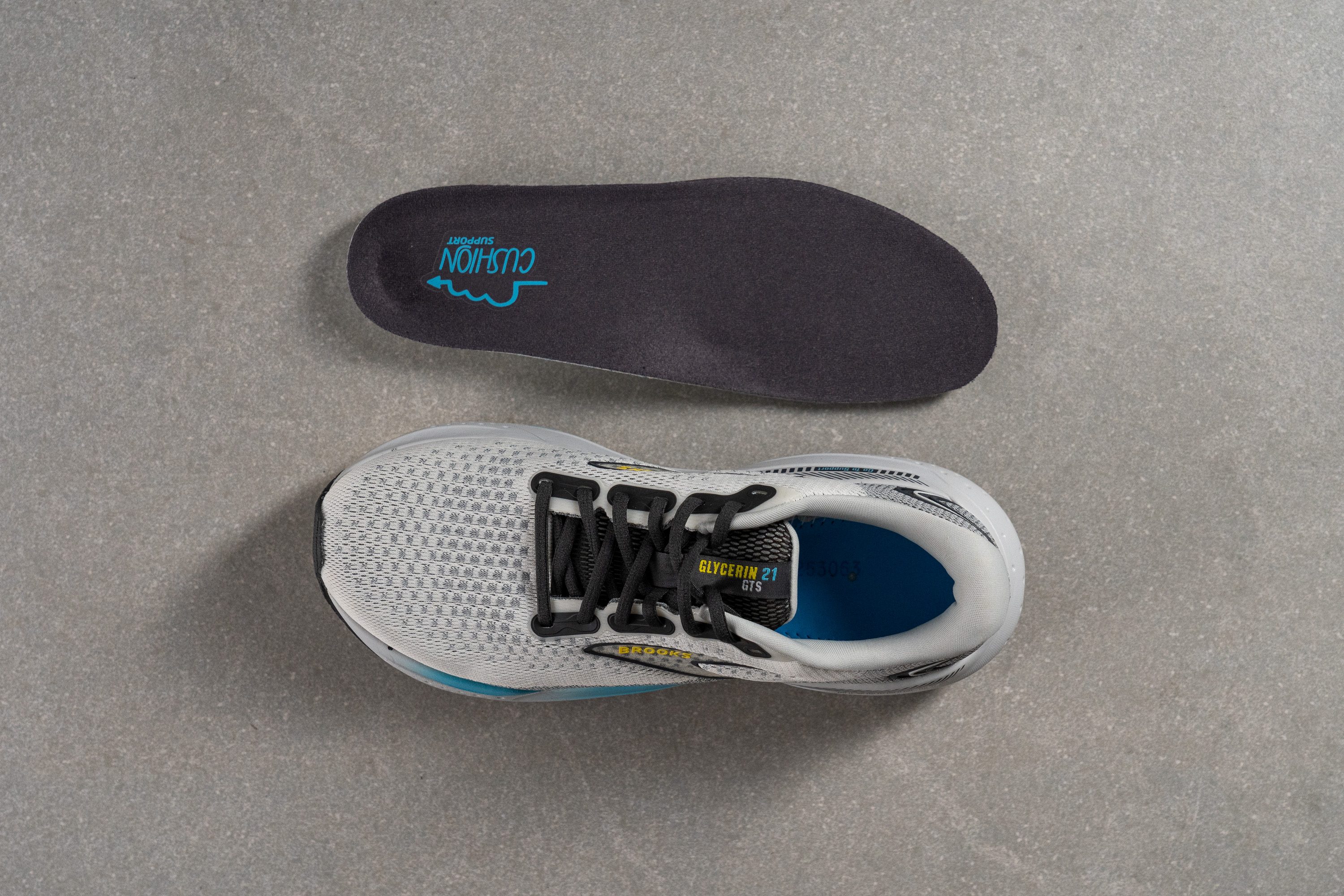
| Glycerin GTS 21 | Yes |
Midsole softness in cold (%)
To our dismay, after putting the shoe in the freezer for a 20-minute nap, the softness had changed by 37.1%—a noticeable and marked increase for a £160 shoe. This test highlighted a significant hardness in the foam when exposed to cold temperatures, which could affect performance for those who live in colder climates.
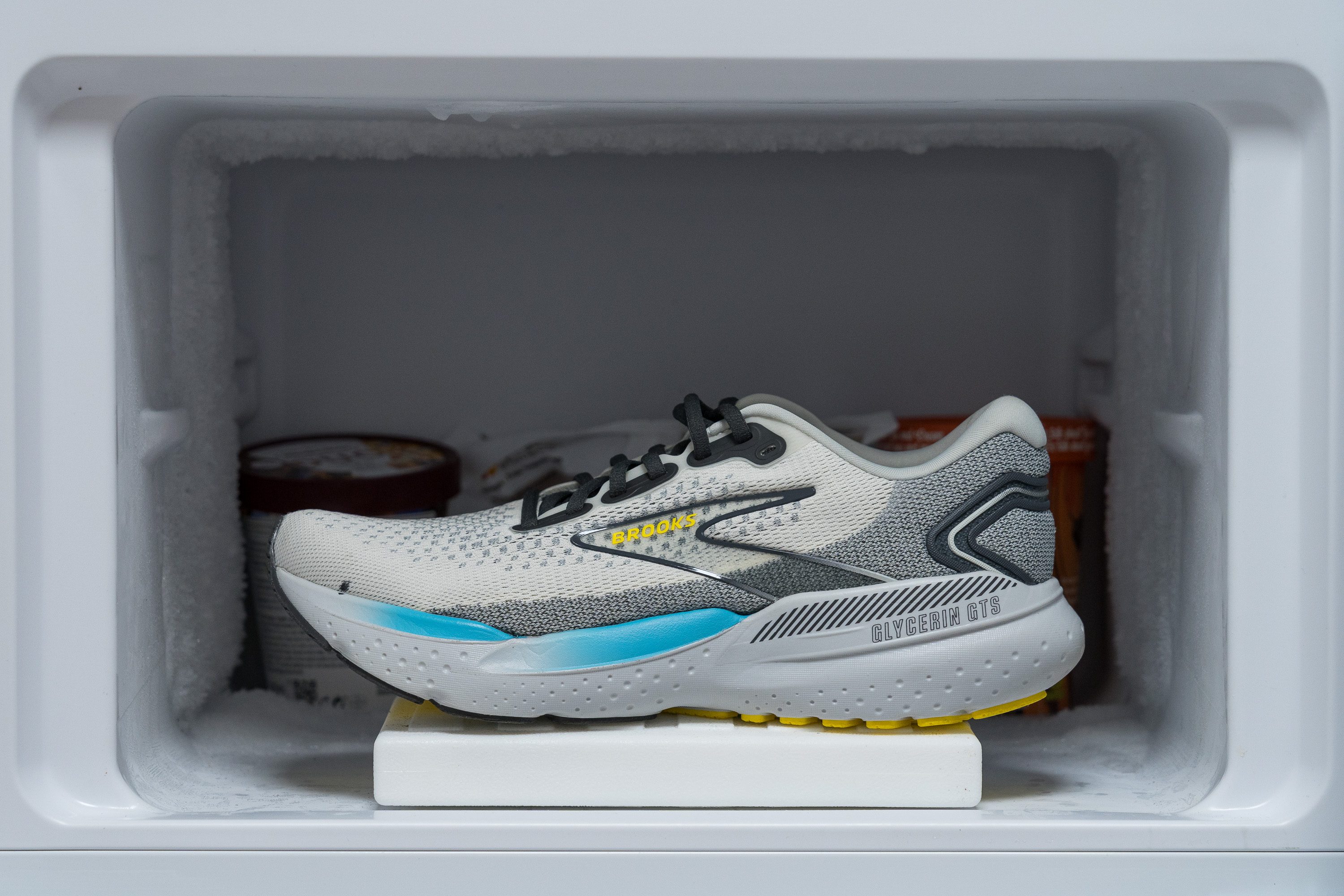
| Glycerin GTS 21 | 37% |
| Average | 24% |
Reflective elements
It came as a letdown to find out that the Glycerin 21 GTS lacks any reflective elements, much like its non-GTS counterpart. We are convinced that incorporating reflective details could significantly benefit runners who prefer late-evening or early-morning runs.

| Glycerin GTS 21 | No |
Tongue padding
The tongue of the Glycerin GTS 21 is well-cushioned, featuring a plush, pillow-like main foam surrounded by a slimmer layer.
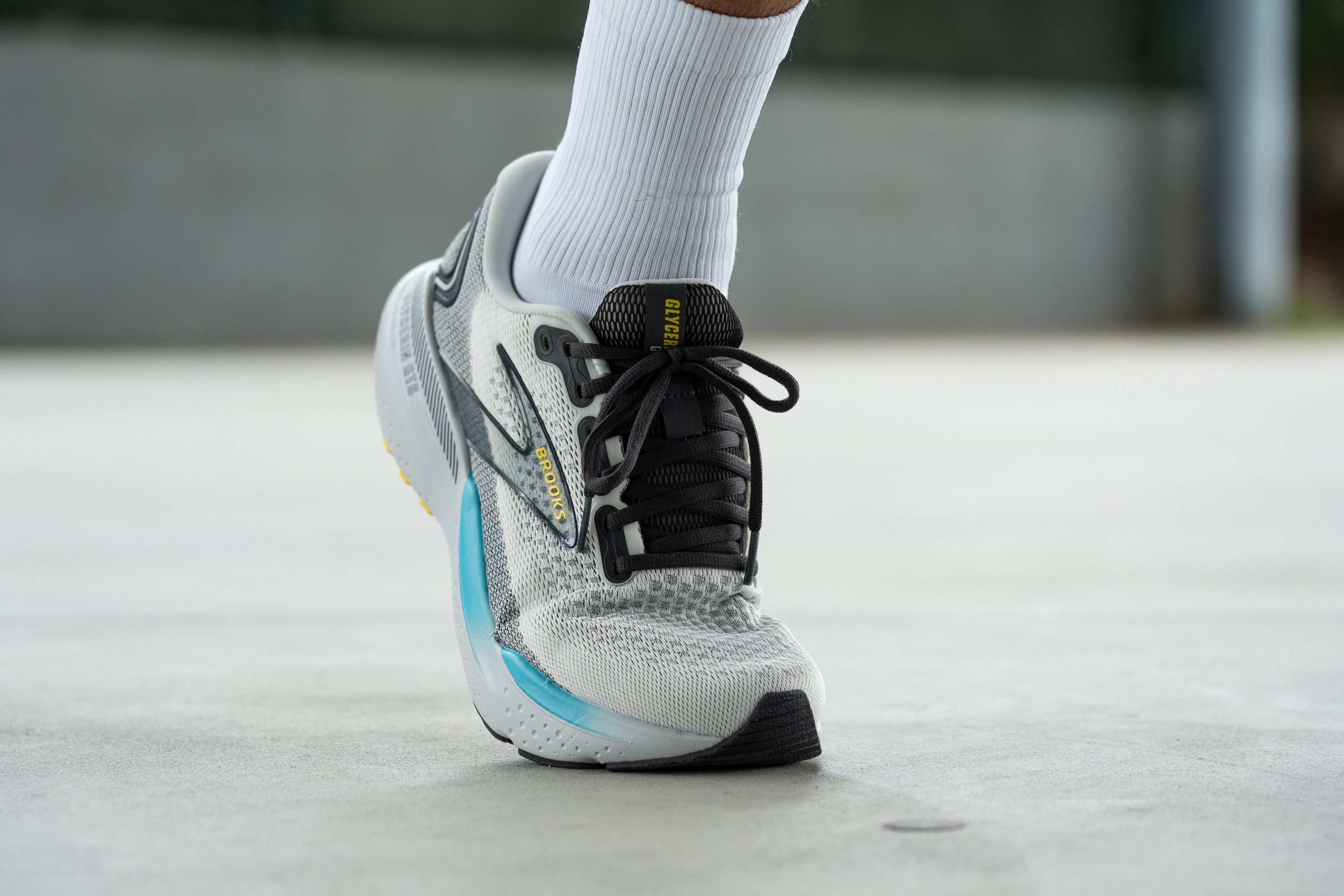
We measured the padding at an impressive 11.5 mm! While we think this might be a bit excessive for some and could be used to shed some weight, we can confirm that it offers exceptional comfort.
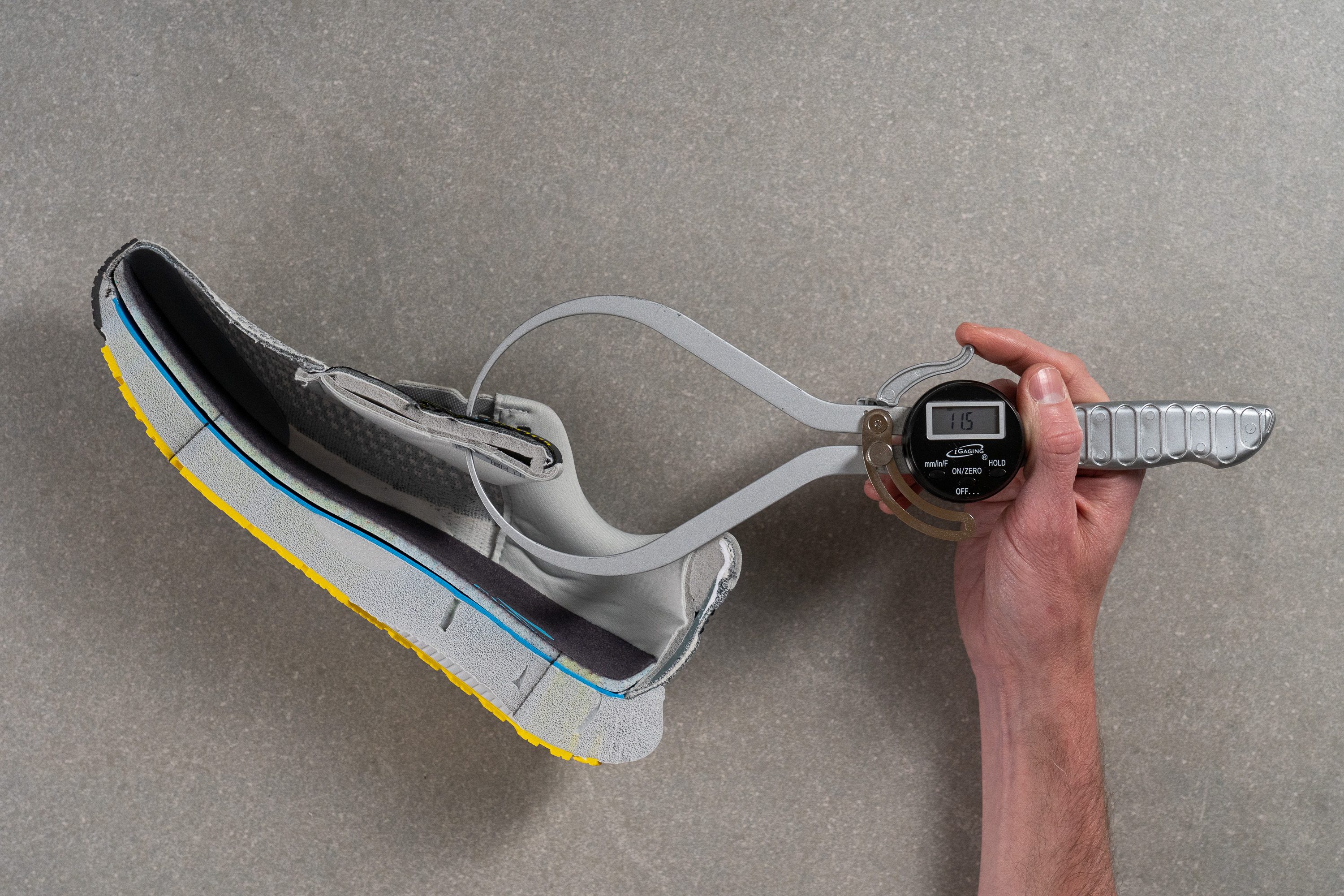
| Glycerin GTS 21 | 11.5 mm |
| Average | 5.8 mm |
Tongue: gusset type
Unfortunately, our tests revealed that the Glycerin features a non-gusseted tongue, which we think is a notable miss.
We are convinced that incorporating a semi-gusseted tongue would significantly improve both the ride and feel of the shoe, especially considering the small price hike from its predecessor.
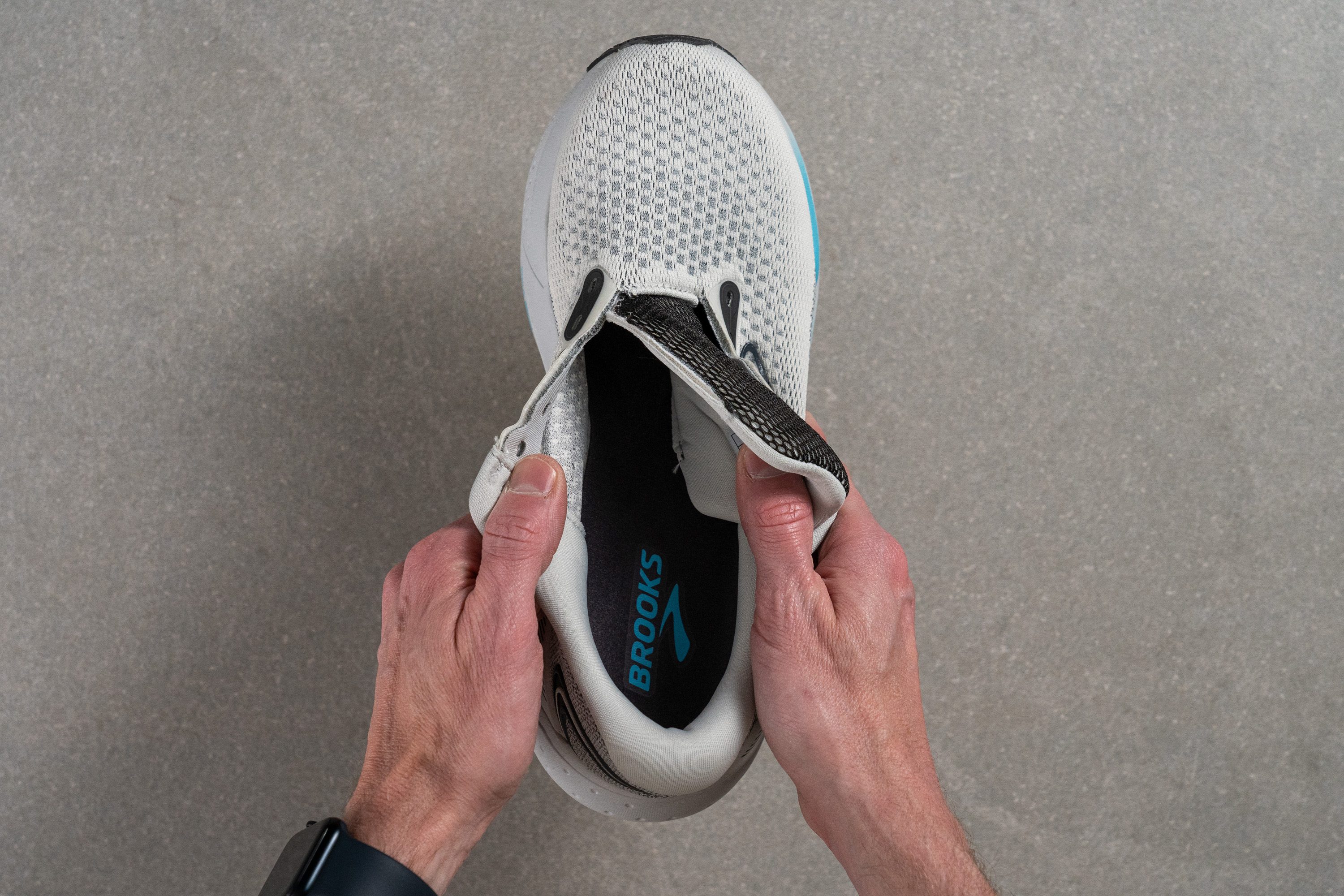
| Glycerin GTS 21 | None |
Heel tab
The Glycerin GTS 21 does not feature a heel tab, consistent with most other Brooks running shoes.
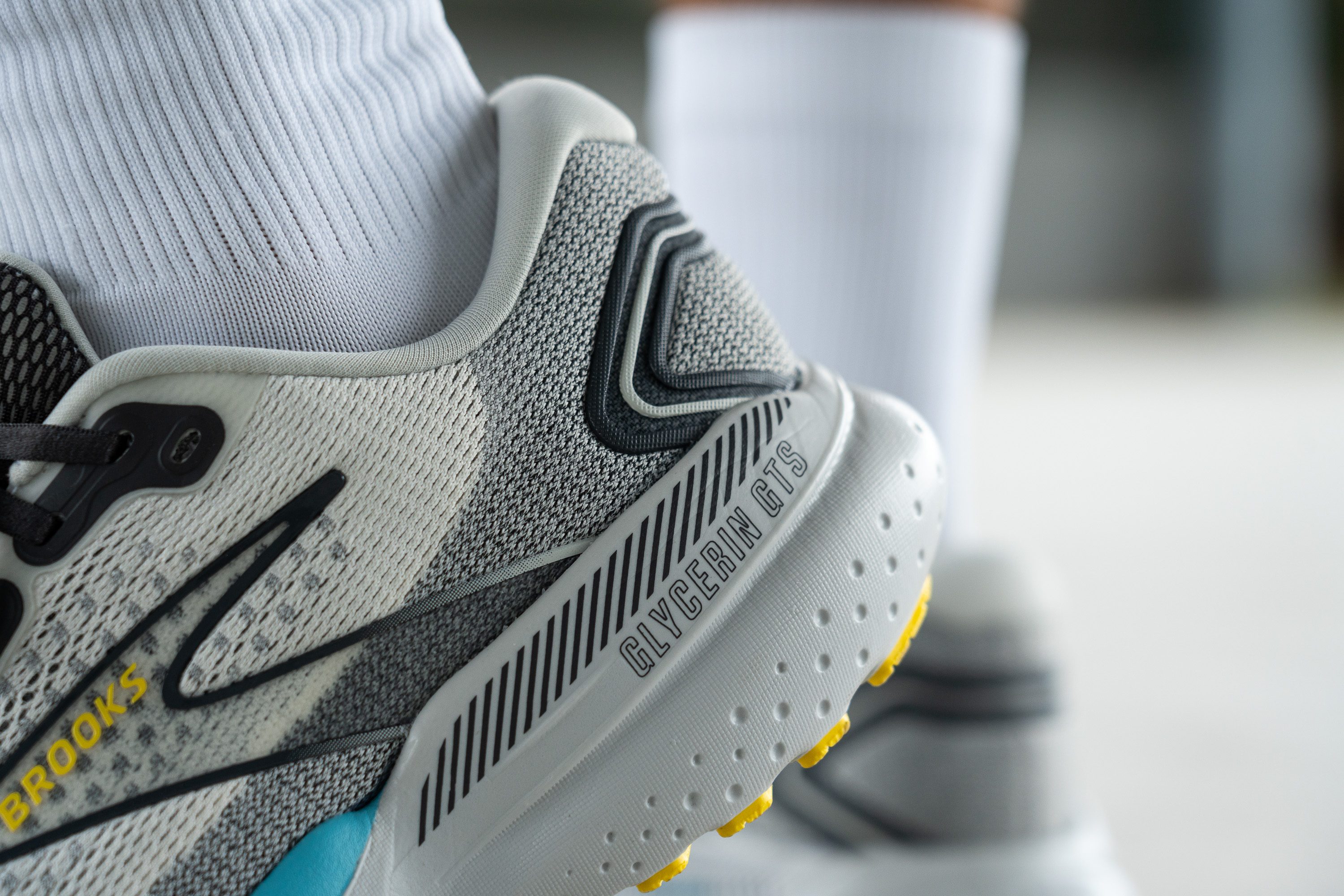
| Glycerin GTS 21 | None |

